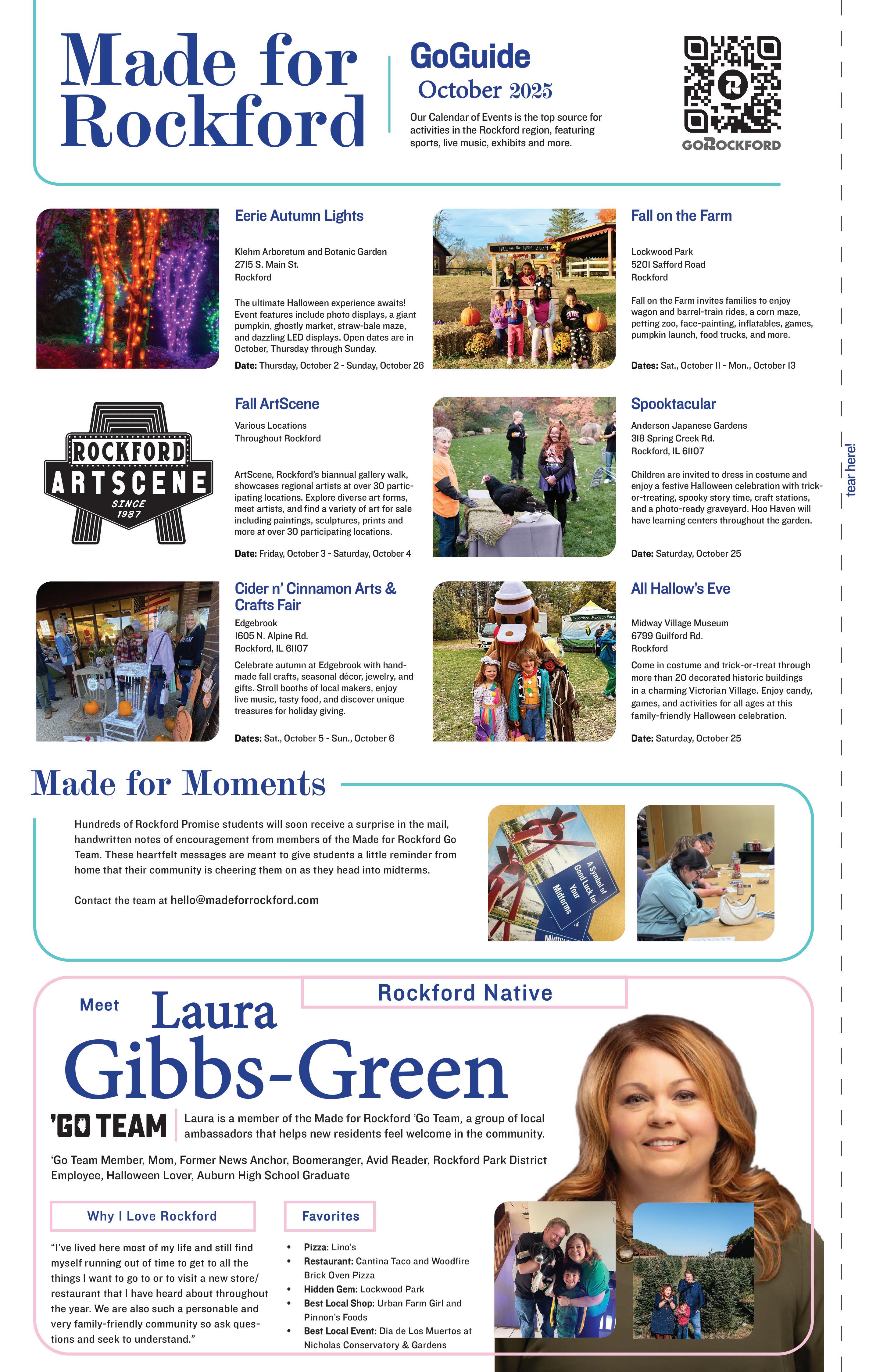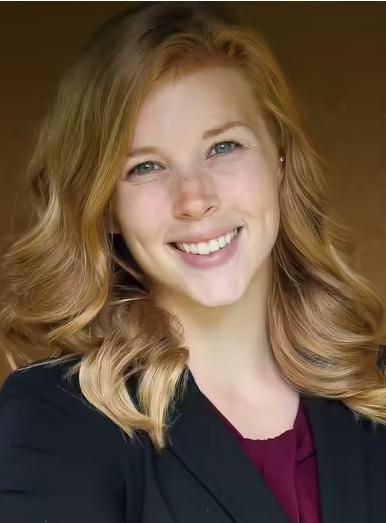
of the greater rockford business community


of the greater rockford business community
By TC Bell, EIGERlab
When people talk about innovation, the spotlight often shines on places like Silicon Valley, Austin, or Boston. But in recent years, mid-sized regional cities have quietly transformed themselves into thriving innovation hubs. Their stories hold powerful lessons for the Rockford Region as we look to the future.
My research led me to explore how Madison, Wisconsin; Grand Rapids, Michigan; and Greenville, South Carolina, (where I lived prior to Rockford) each built ecosystems that support entrepreneurs, attract talent, and fuel economic growth—

and how Rockford can apply these lessons to build our own.
Madison, Wisconsin
Madison has leveraged the University of Wisconsin not only as an academic powerhouse but also as an economic engine. Research at UW accounts for nearly 5% of Wisconsin’s GDP, and commercialization flows through the Wisconsin Alumni Research Foundation (WARF). WARF reinvests patent royalties into faculty, infrastructure, and startups, creating a virtuous cycle of discovery and reinvestment.
The city has also invested in collaborative spaces like the Morgridge Institute for Research and the Wisconsin Institutes for Discovery. These aren’t just labs—they’re designed with “town centers” where scientists, entrepreneurs, and community members collide, sparking new ideas.
Madison’s ecosystem is also notable for its density and connectivity. The community is small enough that relationships matter. You can meet most of the city’s tech leaders in a single coffee shop on a busy day. That intimacy has fueled trust and collaboration, earning
Madison a federal designation as a tech hub.
Grand Rapids, Michigan
Grand Rapids has reinvented itself through a bold bet on healthcare and life sciences. The Medical Mile—a concentration of world-class institutions including Corewell Health, Van Andel Institute, and Michigan State University’s (MSU) Secchia Center—has become the beating heart of the region’s innovation.
Supporting that anchor is The Bridge, a 20,000-square-foot incubator managed by the MSU Research Foundation. By housing biotech and med-tech startups alongside researchers and established players, it accelerates commercialization.
The ecosystem isn’t only about healthcare. Organizations like Start Garden and the Grand Rapids Center for Community Transformation provide resources and mentorship to entrepreneurs across industries. Meanwhile, the West Michigan Center for Art and Technology (WMCAT) blends creativity, workforce training, and community development, making sure the innovation wave is inclusive.
(continued on page 3)
By Lee Anderson, Ignition Studio
If you’re like many B2B manufacturers, you’re using a variety of advertising and promotional techniques to generate sales leads. Depending on your industry, it’s likely a combination of digital and traditional marketing tools that support your direct sales efforts or the efforts of your distribution channels. The reasonably savvy marketers use digital advertising, social media advertising, and print communications—with the help of QR codes or unique URLs—to drive users to a web page to learn more and encourage an exchange of data. It’s a constant and necessary cycle unless you’re blessed with constant referrals and repeat business, which dramatically condenses an otherwise complex and lengthy sales cycle.

The Rockford Area Aerospace Network (RAAN), in partnership with the Greater Rockford Chamber of Commerce and IMEC, present:
MAC2025—Midwest Aerospace Conference
Thursday, October 23
7 a.m.-5:30 p.m.
Embassy Suites, 416 S. Main St, Rockford
This year’s theme is “The Future of Aerospace Manufacturing.” Presentations include:
• Aerospace Market Trends, Mike Stengel, AeroDynamic Advisory.
• Boeing Commercial AircraftSupplier Management Principles, Janene Collins, Boeing.
• Leading for Growth in Today’s Aerospace Market, George Whittier, Barnes Aerospace.
• Understanding Department of Defense (DoD) Defense Industrial Base (DIB) Requirements, Opportunities, Barriers and Cybersecurity Mandate Update, Chris Hollingsworth, APEX Accelerator.
• Growth through Mergers and Acquisitions in the Aerospace and Defense Markets, with panelists George Whittier, Barnes Aerospace; Bill Alderman, Alderman Co; Nate Jordan, Small Business Development Center.
• Benefits of Free Trade Zones, Carrie Zethmayr, Newmark Global Strategy and FTZ #176 administrator.
• Improving Shop KPI’s and Staff Productivity through Factory Data Analytics, Joe DeMartino, Solestra Group, and Charles T. Morley, Schleifring Medical.
Unfortunately for most manufacturing companies, there is no “Buy Now” button to sell products on-the-spot to motivated customers. Retailers often have the luxury of tracking sales to a specific digital advertisement, whereas manufacturers are usually sifting through leads, qualifying opportunities, and then somehow tracking these opportunities throughout.
Generating leads (or demand) through advertising and promotion is one thing. But what about the bigger picture? I believe that marketing success for today’s small to mid-sized manufacturers pivots on using digital content marketing with the goal of
(continued on page 5)
• Advancements in ERP Systems for Small to Mid-sized Aerospace Companies, Bob Aronson, Cre8tive Technology & Design, and David LeBlanc, WM Synergy.
• Advanced Automation Concepts, Akshat Thirani, Amper, and Max Moruzzi, Xaba.
Presentations will be followed by a networking reception with exhibition and a supply chain matchmaking session for manufacturers.
Registration closes at noon on Oct. 10. For details, scan the QR code or visit rockfordchamber.com.
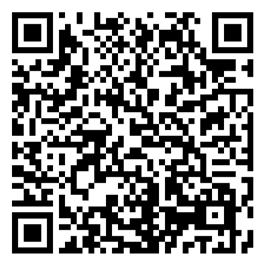
the love of tangible, shippable, usable products
By Angela Kay Larson, Greater Rockford Chamber of Commerce CEO PERSPECTIVE
I’ve long held a fascination for making and manufacturing.
When my parents chose to move their family of six girls from the south side of Peoria to a three-acre hobby farm in nearby Washington, we embraced our new rural lifestyle by enrolling in 4-H. At that time, the national 4-H office was running a “4-H Ain’t All Cows and Cookin’” campaign to spread the word that members could benefit from learning about practically anything from leadership to lightning bugs, i.e., entomology. Yes, I learned to make insect displays by identifying, collecting, drying, and pinning bugs.
Throughout my 10-year 4-H career, I enrolled in sewing projects. I was fascinated by how a two-dimensional yardage of fabric could be made into a three-dimensional garment. I loved selecting patterns at the fabric store, learning to read the instructions, translating measurements, purchasing fabric and notions, spreading everything out on the kitchen table, carefully pinning and cutting out the
pieces, operating the ancient Singer sewing machine, pressing the seams, sewing on buttons, and hand-stitching hems—all the while imagining the end result. That’s making.
If I had decided to mass produce those garments by sourcing a high volume of materials and setting up reliable, repeatable systems and machines for cutting, stitching, and pressing, that’s manufacturing.
Is it any wonder that I was drawn to manufacturing jobs? My first was at Honeywell’s MICRO SWITCH division in Freeport where we manufactured electronic switches and sensors. Next, I moved to ELCO Industries in Rockford where we manufactured fasteners, and I learned to appreciate the repetitious banging of the cold heading machines. Most of my manufacturing career was at Woods Equipment Company in Oregon, home of the iconic Batwing® rotary mower. (BTW, there are many stories behind that trademark, and one involves conversations with a global comic brand.)
The Greater Rockford Chamber of Commerce (GRCC) is accepting nominations for the Women in Business Awards to be presented at the Pow(H)er Conference Women in Business luncheon, Nov. 13, at Embassy Suites Rockford. Nominations close Oct. 10. Nomination forms and information at www.rockfordchamber.com/recognize-aleader
EMERGING
In the early stages of her career, this honoree exhibits leadership skills, a commitment to professional growth, and contributes positively to her team and/or organization.
WOMAN BUSINESS OWNER OF THE YEAR
Presented by Thayer Energy Solutions
As a female entrepreneur/business-owner (minimum 51% female ownership), this honoree exhibits leadership skills and embodies business success.
EXCELLENCE IN LEADERSHIP
Presented by Erna Colborn, Edward Jones
In a leadership role within her organization, this honoree effectively leads teams and continually works to grow personally and professionally.
COMMUNITY HERO
Presented by Midland States Bank
This honoree works just as hard in her community as she does on the job, giving her time, talent, and treasure to make things better.
All of these companies manufactured a product—a tangible, shippable, usable product. Something that started with raw materials and was cut, punched, extruded, fabricated, assembled, welded, and/or painted. I loved it!
I still love manufacturing. I love the process of product development. How an idea can literally take shape through marketing expertise, customer perspectives, design talent, manufacturing engineering skills, and a whole host of other experts in procurement, planning, packaging, and logistics. My work in manufacturing started in employee communications (a storyteller to keep team members informed and engaged), progressed to advertising and sales promotion, and eventually marketing.
Many people think of “marketing” as “promotion,” however “Marketing Ain’t All Copy and Click-throughs.”
In my role as VP of marketing at Woods, I was indeed responsible for promotion and also led our efforts
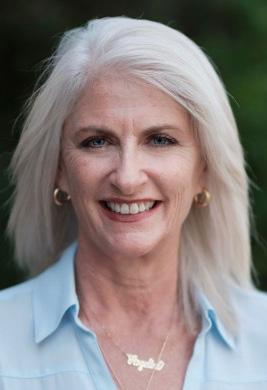
Pow(H)er is a conference for all who suppor t, believe in, and champion the advancement of women
in the other P’s of marketing. I coled product development with our VP of engineering; championed our pricing analysis and sales programs; and managed technology and communications to support our dealer, online, and retail distribution channels (that would be the “place” P). We made sure that the commercialization of our products was integral to making them, recognizing that not everyone in manufacturing gets to directly touch the product day in and day out.
Today, I’m even further away from the manufacturing front line. That’s why visiting our manufacturing members, supporting the Rockford Area Aerospace Network, and promoting workforce skills development programs are highlights of my work at the Chamber. While I’m no longer engaged in making tangible, shippable, usable products, I’m pleased and proud to be one of the many individuals and numerous organizations that contribute to our region’s strength in manufacturing.
Angela Kay Larson attributes her love of manufacturing to her years as a 4-H seamstress and to growing up with a father who spent his career on the factory floor at Caterpillar, Inc. As each of his girls turned 25, he gifted them 25 shares of CAT stock to engage them in the stock market, further entrenching Angela in the world of business.
The theme for this month’s issue of the VOICE is Innovation and Manufacturing. These two topics have more than a passing relationship. To use a well-worn cliché, they’re two sides of the same coin. Both are required to solve problems and bring new concepts to life. Without manufacturing, ideas cannot evolve and fulfill their purpose. Without innovation, products and processes become irrelevant or obsolete.
The Chamber members who contributed to this issue embraced these topics with pride and passion. From aerospace to agriculture, this month’s articles address supply chains, marketing, AI, legal issues, health care applications, new technology, innovation ecosystems, and, of course, workforce development.
We also have articles dedicated to Hispanic Heritage Month and National Manufacturing Month. And we would be remiss if we didn’t include at least one ghost story in our October issue.
Don’t forget about the upcoming Midwest Aerospace Conference on Oct. 23 and GRCC’s Pow(H)er Conference on Nov. 13. With events like these, I see a lot more innovating and manufacturing in our future.
—Christine Hand, managing editor
UPCOMING EDITORIAL THEMES FOR THE VOICE
Nov – Working with the Government Dec – The Business of Nonprofits Coming Soon – 2026 Editorial Calendar
Chamber members are welcome to submit objective, thought leadership articles for publication in the VOICE.
Visit rockfordchamber.com/the-voice for our editorial calendar, article guidelines, and advertising information.
(continued from page 1)
Greenville, South Carolina
Greenville has become one of the most supportive cities for startups in the Southeast. A recent survey even named it South Carolina’s most startup-friendly city.
The city’s strategy has been to weave together a dense support network of more than 60 entrepreneur support organizations (ESOs) under the StartupGVL brand. Anchors like the NEXT Innovation Center—a 60,000-square-foot startup hub—give entrepreneurs a home, while events and programming keep the energy flowing.
Capital access has also been key. Venture groups like VentureSouth and IDEA Fund Partners give local startups funding pathways, while state-level programs add another layer of support.
Combined with Clemson University’s research strength and the region’s advanced manufacturing heritage, Greenville has built a fertile environment where ideas turn into thriving companies.
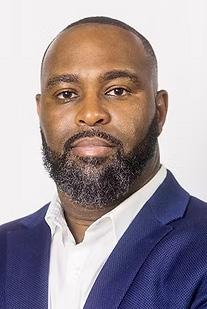
Although each of these cities has taken a slightly different path, the common thread is clear: Ecosystems thrive when they are intentional and focused. Each city aligned its institutions, cultivated collaboration, and invested in both talent and infrastructure.
For Rockford, the path forward means leveraging our strengths— advanced manufacturing, aerospace, healthcare, and the arts—while building the connective tissue between schools, corporations, entrepreneurs, and community organizations.
If we want to attract and retain the next generation of talent, we need to tell our story boldly, invest in shared spaces and support structures, and celebrate the innovators already shaping our future.
The views expressed are those of the author(s) and do not necessarily represent those of the Greater Rockford Chamber of Commerce.
TC Bell is an EIGERlab board member and the head of strategy and execution for Evolution Digital Marketing Agency.

Celebrating innovation in Northern Illinois Saturday, October 25, 3-6 p.m.
RPL Nordlof Center, 118 N Main St, Rockford
Hosted by EIGERlab and cosponsored by the Greater Rockford Chamber of Commerce
The 815 Innovation Awards spotlight outstanding contributions across diverse sectors—from aerospace and robotics to healthcare, education, arts, and community impact. Honorees represent the very best of our region’s ingenuity and creativity. The evening will feature an awards ceremony followed by a networking reception.

What to look for when sourcing xenon gas for ion propulsion systems and other components with strict technical standards
By Jake Cashman, Messer LLC
For procurement teams and engineers in the aerospace industry, choosing the right supplier is a strategic decision with direct implications for success. Xenon, due to its limited global production and stringent aerospace purity requirements, is a prime example.
This guide outlines considerations when looking for a xenon gas supplier. However, these tips can be applied broadly across many components with critical considerations for the quality, logistics, and technical standards that matter for aerospace applications.
The role of xenon in ion propulsion
Xenon plays a mission-critical role in modern spacecraft propulsion. As the preferred propellant for Hall-effect and ion thrusters, it enables efficient, long-duration maneuvering for satellites and deep-space missions, supporting everything from station-keeping to orbital transfer.
Unlike chemical thrusters, which produce large amounts of thrust for
short bursts, ion and Hall-effect thrusters generate small amounts of continuous thrust over long periods. This thrust allows spacecraft to maneuver efficiently using only minimal amounts of propellant in the vacuum of space, an essential advantage for satellite stationkeeping, deep-space missions, and longduration orbital adjustments.
Xenon is the propellant of choice for most electric propulsion systems. Its high atomic mass and low ionization energy make it ideal for forming dense, stable plasma with relatively low power requirements. Its chemical inertness also minimizes corrosion and contamination risk inside the propulsion system.
Xenon supply chain challenges
Because of costs and availability, xenon is usually secured well in advance, often under long-term contracts. Lead times can stretch for months, and buyers who wait until late in the integration process may face shortages. In this


context, strategic sourcing and advance planning are essential.
Like many critical aerospace components, xenon procurement for ion propulsion demands exacting standards. Aerospace buyers need suppliers who can meet ultra-high purity requirements, maintain tight process controls, and deliver reliably on mission timelines.
1. Supply chain availability
Xenon is exceptionally scarce, and disruptions in global supply can result in long lead times, inflated pricing, or procurement failures. Domestic sourcing minimizes exposure to geopolitical shocks, customs delays, or transoceanic freight disruptions, while promoting faster fulfillment.
2. Ultra-high purity specifications
Ion propulsion systems are extremely sensitive to contaminants. Even trace amounts of moisture, hydrocarbons, or oxygen can disrupt plasma discharge and erode components. Aerospace applications typically demand xenon purity of 99.999% (5.0 grade) or higher.
Suppliers must maintain tight control over purification and filling. Look for clear documentation of impurity thresholds (especially for moisture, CO₂, O₂, and total hydrocarbons) and confirmation that those levels are achieved consistently across batches.
3. Contamination control and filling standards
Look for suppliers that can offer ISO 9001 and 14001 certifications and adherence to CGA (Compressed Gas Association) safety guidelines for cylinders.
4. Batch traceability and documentation
Aerospace programs demand full visibility into the supply chain. A supplier should provide:
• Certificates of Analysis (CoAs) confirming impurity levels.
• Certificates of Compliance (CoCs) affirming specification.
• Documentation tying each cylinder to batch/fill history.
• Safety Data Sheets (SDS).
5. Delivery container compatibility
Xenon delivery requires specialized packaging. Aerospace customers typically use DOT-rated steel or
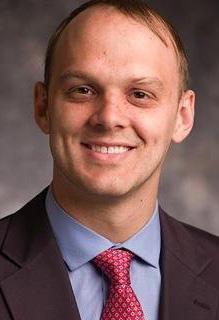
aluminum cylinders, manifolded packs, or clean-certified containers. Depending on the mission phase, you may require:
• High-pressure cylinders for propulsion system integration.
• Manifold packs or loading carts for satellite fueling.
• Custom-labeled or cleanroomconditioned containers for launchpad delivery.
Xenon may only make up a tiny fraction of a spacecraft’s total mass, but its quality can determine whether a propulsion system performs for years or fails prematurely.
Using these tips can help you find a strategic partner that offers both the technical capabilities and responsive logistics required for urgent aerospace timelines, helping you execute complex missions with confidence.
Messer is the world’s largest, privately held industrial gas company, with more than 125 years of expertise in industrial, medical, specialty, and electronics gases. For aerospace customers, it provides high-purity xenon, and other gases, along with technical collaboration, and supply assurance, working directly with them to design equipment and adhere to aerospace standards for cleanliness and safety. Messer’s plant—producing over 700 tons-per-day of oxygen and nitrogen— in Beloit, Wisconsin, contributes to the culture of precision, innovation, and advanced manufacturing that makes the Rockford Region a hub for aerospace and technology.
This article was originally posted on Messer’s Give it Gas! Blog under the title “What to Look for When Sourcing Xenon Gas for Ion Propulsion Systems.” Messer makes no warranty or representation as to the suitability of the information provided in this guide for any particular purpose. You rely on this information in your sole discretion.
The views expressed are those of the author(s) and do not necessarily represent those of the Greater Rockford Chamber of Commerce.
Jake Cashman is an account manager with Messer, the largest privately held industrial gas company in the world. He works closely with customers across the Midwest to provide safe, reliable gas solutions that support industries from healthcare to advanced manufacturing. He can be reached at jake.cashman@ messer-us.com or 630-699-9529.
By Kika Young, Forest City Gear
The Rock River Valley has always been a place where hard work and craftsmanship thrive. Industry was already booming when my grandparents, Stetler & Evelyn, founded Forest City Gear in 1955. Since then, manufacturing has waxed and waned. But one truth remains clear: Our region and manufacturing remain inextricably linked. If we want the 815 to continue to flourish, bolstering the skilled trades is vital.
Today, our region is home to some of the top players in aerospace manufacturing and machining. We’re proud to stand in the same circle as Woodward, Collins, and Kaney, to name a few. These companies compete on a global scale, all while employing thousands of our neighbors and friends. At Forest City Gear, we employ 125 people—60% of whom are in skilled trade roles like machining, CNC programming, and quality inspection.
Like many other manufacturers in the area, the impact of the workers here reaches far beyond our shop. Gears made here in Roscoe have traveled aboard NASA missions, propelled satellites into orbit, and powered four Mars exploration Rovers. Forest City Gear and our peers prove that a career in the trades is more than just a job. Every day, workers in the Rock River Valley are helping humanity reach for the stars.
Competitive careers
Manufacturing is the backbone of our local economy, providing not just jobs but stable, rewarding careers. Many skilled trade positions start with salaries greater than $40,000 a year (right out of high school), with incredible opportunities for growth. These positions often come with enviable benefits, including paid education and comprehensive health
(continued from page 1)
creating thought leadership, elevating the things that your brand promises to deliver, and influencing (or nurturing) buyers before, during, and after the sale. This is especially critical for those manufacturers with long and potentially complex sales.
If you haven’t embraced digital marketing to any great extent, now’s the time, because the stats are compelling. According to the “29 Must-Know B2B Marketing Statistics for 2025” published by Lead Forensics (www.leadforensics. com/blog), 67% of the B2B buyer’s journey is now done digitally.
In response, manufacturers should be focused on publishing meaningful content on platforms such as LinkedIn, trade association websites, and the likes, including e-mail marketing. These are
coverage. For too long, the trades have been written off as stopgap jobs. These are careers that build families, strengthen communities, and instill pride.
The reality is that our region, like much of the country, is facing a growing demand for skilled workers. As experienced tradespeople retire, openings are left unfilled. We need the next generation to step up and carry forward the legacy of excellence that our community is built on. But we need your help.
Reframing the narrative
Stereotypes surrounding the trades paint a picture of dark, dirty, and dangerous workspaces. And it just is not accurate. Our facilities are bright, clean, and outfitted with the best machinery on the market—some of it designed and manufactured in the Rockford Region. Automation, machine learning, and CNC machining can all be found in nearly any manufacturing facility in town.
Our machinists and inspectors function at the same level of technical complexity as any engineer or scientist using cutting-edge technology. And as much as we work with technology, these jobs are surprisingly resistant to succumbing to the age of AI. While many “laptop jobs” are at risk of getting replaced with AI automation, the trades are here to stay.
Pathways into the trades
Accessibility is probably the main advantage of this career path. You don’t need to drudge through a fouryear degree or rack up decades of debt to begin. High school technical programs, affordable community college certificates, sponsored apprenticeships, and on-the-job training are all common and viable paths to entry.
the most cost-effective methods to reach large audiences with sensible frequency.
Not convinced? An article released by the Content Marketing Institute (contentmarketinginstitute.com) titled “B2B Content Marketing Benchmarks, Budgets, and Trends” reported that more than 70% of B2B marketers who effectively use digital content marketing to build brand awareness generate leads. More than 60% of those marketers said it nurtured subscribers/audience/leads that could be tracked to revenue.
There’s no doubt that the future is in digital marketing and will only continue to get more sophisticated. For the average manufacturer with a small or non-existent marketing department, consider aligning with a full-service marketing firm that can help you navigate the nuances of both digital and traditional marketing. I have found there’s no steadfast rule or universal

Right here at home, the Rock River Valley Tooling & Machining Association (RRVTMA) facilitates skilled trades apprenticeships in partnership with Rock Valley College. These programs allow young people to earn while they learn to gain journeyman certification from the Department of Labor. Apprenticeships in CNC machining, gear cutting, welding, and more are sponsored by the students’ employers. That means valuable training without missing work or a paycheck.
Parents: the key to encouragement
Schools and businesses can open doors, but a parent’s voice and guidance usually matters most. For too long, the misconception that “success can only come from a four-year degree” has been repeated and internalized. But the truth is that work in the trades offers stability and satisfaction—benefits that any parent would want for their child.
Here’s my call to action, parents. It’s on us. Start the conversation young. Talk about welding or machining or excavating and not just becoming a doctor or lawyer. Talk about ALL the options. Tour a local facility—at FCG, our door is always open. Find a friend in the trades to talk to your kids. Learn

calculation on how much to invest in digital vs. traditional marketing. Go into it with reasonable goals, knowing that every marketing medium you’re evaluating to generate demand and nurture your audience (whether it be digital, social, print, direct mail, etc.) performs very differently from one company to the next.
The ‘trick’ is to find the right balance, and ultimately, do more of the things that work and less of the things that don’t.
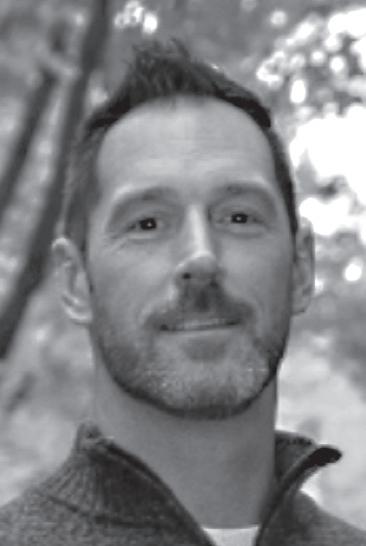
about apprenticeships or high school internships. Show your kids that these are legitimate jobs that you would be PROUD of. Building a home, repairing a car, or making a part for an airplane— these are real, tangible skills that are respectable.
American manufacturing depends on you
The future of our community rests on the shoulders of the next generation of skilled tradespeople. That’s no exaggeration. Parts for outer space exploration will continue to come from the Rockford Region, as long as there are skilled minds here to manufacture them. If you’re a parent, I urge you to encourage your kids to explore the skilled trades. Help them see that a future in manufacturing is not only possible but promising. Instead of paying off student loans well into their 30s, they can buy a house in their 20s. The opportunities are here, the technology is cutting-edge, and the need has never been greater.
The views expressed are those of the author(s) and do not necessarily represent those of the Greater Rockford Chamber of Commerce.
Ignition Studio is a branding, design, and digital communications agency. Founded in 2004, they develop successful, full-brand experiences at all points of customer contact—helping clients engage their audiences and win opportunities.
The views expressed are those of the author(s) and do not necessarily represent those of the Greater Rockford Chamber of Commerce.
Lee Anderson is a partner at Ignition Studio with more than 25 years of brand formation and identity consulting experience coupled with executing large scale marketing and brand-building initiatives. v
GUEST COLUMNIST
By Kathryn Seebruck, University of Illinois Extension
When you think of farming, the terms “simplicity” and “tradition” may come to mind. However, when offered a closer look into the finer details of modern farming operations, you find that it’s anything but simple, and the traditional way of doing things is no longer. Tractors are larger and more sophisticated. Advanced genetics better enable crops to withstand pest and environmental stressors. New crop input products like biologicals and biostimulants offer farmers additional options for enhancing crop growth.
Perhaps the most profound agricultural innovation has been the rapid advancement of precision agriculture technology. Tractors can plant fields with increased accuracy using global positioning system (GPS) guidance and receive real-time planting and harvest data via display monitors mounted in the cabs of planters and combines. Variable rate technology enables farmers to adjust application of inputs to specific locations within a field to better manage the unique needs of different areas rather than treating the field uniformly. This leads not only to better yields but also to less waste and reduced environmental impact.
Some farmers are also adding a new instrument to their precision ag arsenal in the form of drones. The original use of drones in agriculture was for crop scouting, one of the simplest but most effective practices a producer can carry out. By visiting fields and assessing them throughout the season, scouting can provide a farmer with valuable insights into the health of their crop. Using a drone, especially one equipped with a multi-spectral camera, enables the producer to assess crop stands, vigor, pest presence, growth stage, and more, without having to set foot in the field. Additionally, drones allow farmers to scout fields that are difficult to reach
or maneuver by foot, and capturing an aerial view of a field enables the producer to see large-scale patterns they may not otherwise notice while walking a field.
More recently, larger drones have been used to perform various farming operations. In mid-to-late July, it is common to see low flying airplanes and helicopters make passes up and down cornfields as they spray fungicides and sometimes insecticides to protect the crop from diseases and insects. Often referred to as crop dusting, this practice is crucial to protecting the crop during one of the most vulnerable portions of its life cycle. These products must be applied within a short timeframe, and producers are often at the liberty of applicators’ busy schedules. When owned by the farmer, spray drones offer a major advantage for timesensitive applications and can also provide an opportunity for the farmer to diversify their operation by offering custom drone spraying services to other farmers. Use of drones is also ideal for small or irregularly shaped fields, as well as fields with barriers that are more difficult or dangerous for an airplane to maneuver around.
Additionally, spray drones offer significant safety advantages over traditional manned aircraft used in agricultural applications. Unlike manned airplanes or helicopters, spray drones eliminate the risk to human pilots by operating remotely, which reduces the potential for fatal accidents. Spray drones also minimize the risks associated with carrying large volumes of hazardous materials and aviation fuel, as they typically carry much smaller payloads and operate at low altitudes within field boundaries. Although drones are advancing quickly, their limited battery life, smaller coverage capacity, and regulatory restrictions

currently make them less cost-effective for large operations. As technology and regulations evolve, swarms of drones working in coordination will likely overcome many of today’s limitations.
Spray drones can also be used for aerial seeding of cover crops, which are plants grown not for harvest but instead to provide ground cover and other conservation benefits that improve soil health and protect water quality. In Northern Illinois, cover crop establishment can be difficult due to the short timeframe between fall harvest and the onset of winter. By using a drone, producers can seed cover crops into the standing cash crop as it approaches maturity, giving the cover crops more time to establish and

ultimately maximize their conservation benefits. Like input application, cover crop seeding via drone is rapidly gaining in popularity.
Agricultural technology is constantly evolving. As such, farmers must also evolve as more and more agricultural innovations are developed to improve yields, efficiency, and safety. Providing the world with food, fuel, and feed is no easy task, and these innovations are what make it possible for farmers to support the world’s growing population.
The views expressed are those of the author(s) and do not necessarily represent those of the Greater Rockford Chamber of Commerce.

By Sara Benzel, UW Health
Ambient listening is a voice recognition technology that uses AI to record, transcribe, and analyze the discussion a health care provider and patient have during an appointment, creating a draft note that the provider reviews and uses as part of the patient’s visit documentation.
According to 2025 survey data from the Medical Group Management Association, 30-40% of U.S. health care providers have begun using ambient listening tools during patient visits, with the percentage expected to climb significantly over the next few years.
Locally, UW Health began its ambient listening pilot program in 2024 and has since quadrupled the number of care providers using ambient listening to deliver higher-quality patient interactions.
Ambient listening gives providers more time to focus on patients and enhance the quality of those interactions, according to Dr. Joel Gordon, chief medical information officer, UW Health. It also reduces the significant burden of administrative work that providers face, creating a path for better work-life balance and well-being for providers, he said.
“This tool has allowed our care team members to look away from their computer screen and not split focus between their notes and their patient,” Gordon said. “It also means providers are experiencing a significant decrease in clerical burden, which has led to a 20% reduction in burnout and an improved joy of practice. Early measures have proven that this is already making a positive difference.”
Initial UW Health data has shown a decrease in work outside of work hours by 30 minutes per day, improved efficiency and trust in AI from providers, and less time spent writing notes by 22 minutes per shift. The length of notes has been increasing through AI capture, allowing providers to truly focus on their interactions with patients. These shifts not only support clinician wellbeing but also enhance the accuracy and completeness of documentation, ensuring critical details are preserved.
UW Health’s ambient listening pilot program began in 2024 with 20 providers. These providers were based in Wisconsin,
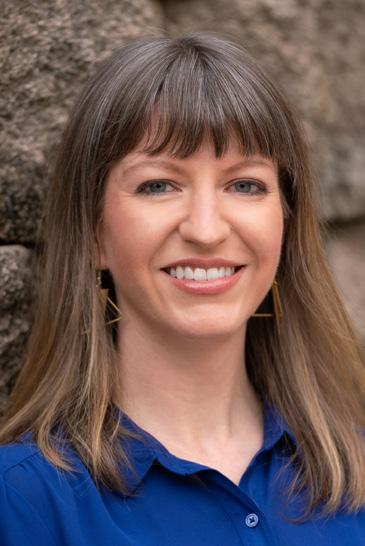
self-selected to be part of the pilot, and only worked in clinic (non-inpatient) settings. By the end of last year, UW Health had approximately 100 ambient listening users, and the technology is currently used in more than 20 different specialties and subspecialties like family medicine, pediatrics, and dermatology.
Several early adopters describe the tool as life-changing, such as Dr. Jeffrey Gurtizen, family medicine physician, UW Health in Northern Illinois.
The tool can summarize a condition and care plan for the patient, and it can also filter out non-medical discussions, he said.
“Our patients have really been responding well to this, and seeing how it benefits their appointments and their care,” Gurtizen said. “It’s really a remarkable innovation.”
At UW Health in Northern Illinois, the integration of the ambient listening tool is already transforming clinical workflows and enhancing provider efficiency. Since its implementation, 67 ambulatory providers have adopted the technology. To date, the tool has generated more than 20,000 patient notes, streamlining documentation and reducing administrative burden.
“Notably, the tool has contributed to a 5% increase in same-day encounter closures, which has allowed more of our providers to complete their notes on the same day they see patients and has been an important step toward improving both our clinicians’ well-being and patient care,” Gordon said.
Patients are always informed when a provider plans to use ambient listening and can opt out of the tool being used in an appointment. Providers are still responsible for reviewing all ambient listening appointment notes and adjusting them for accuracy before they are considered final notes for a patient’s chart, according to Gordon.
As of July of 2025, UW Health had rolled out the technology to 300 additional clinic users, totaling 400 users in Wisconsin and Northern Illinois.
The views expressed are those of the author(s) and do not necessarily represent those of the Greater Rockford Chamber of Commerce.
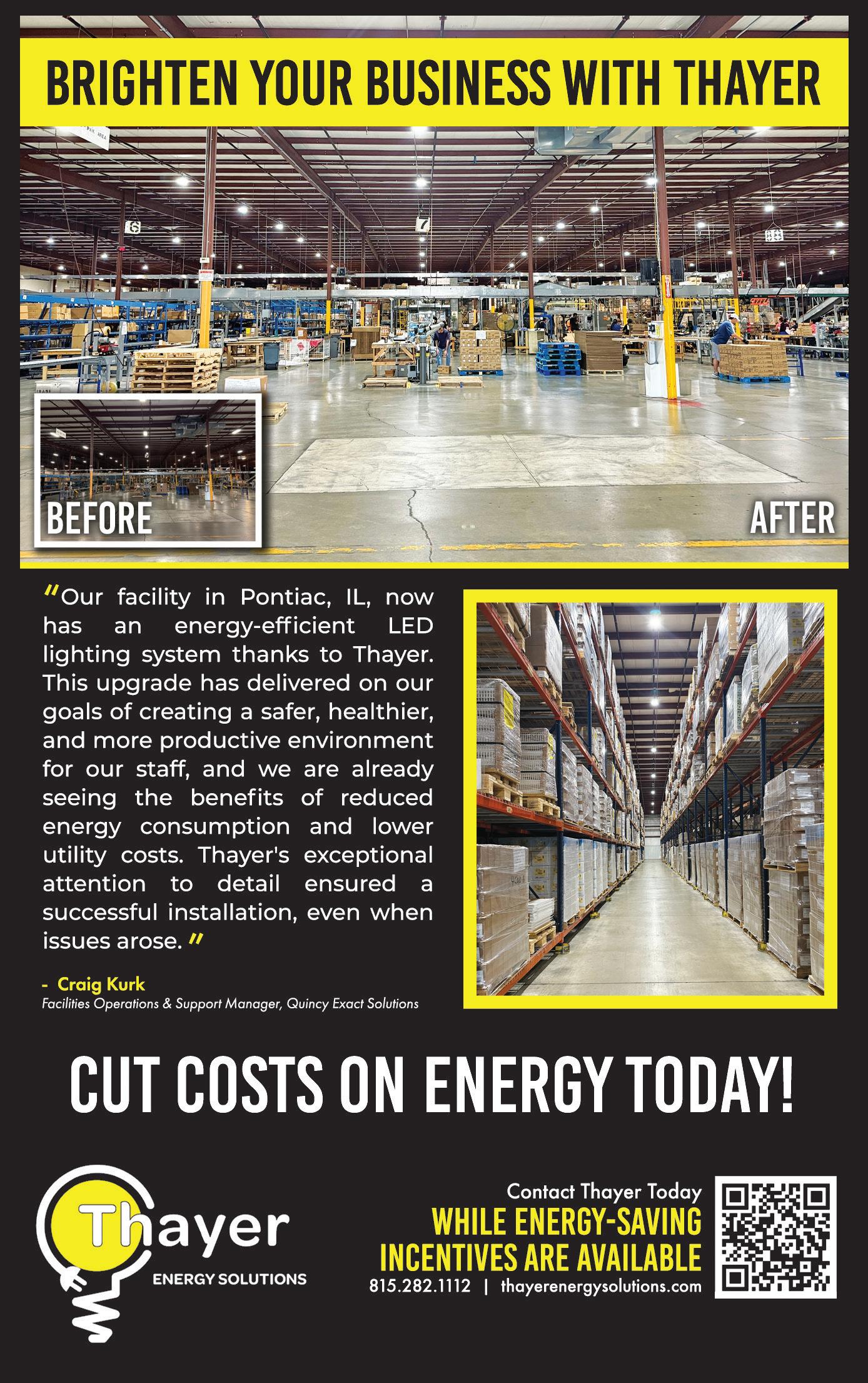
Sara Benzel is the media relations manager at UW Health, where she oversees the team responsible for crisis communications and strategic news media outreach and response. Previously, she worked in national media relations for Kaiser Permanente. She is a graduate of the UW-Madison School of Journalism and Mass Communications.

By Matt Paison, Illinois Manufacturing Excellence Center (IMEC)
As manufacturers embrace AI and automation, lean thinking remains essential to ensure technology amplifies efficiency, not errors, and people stay empowered to solve problems at the source.
The future of manufacturing is undeniably digital. From predictive maintenance and robotic automation to intelligent production planning, technology is transforming the way we make things. But even as we integrate these powerful tools into our operations, we must not forget the foundational practices that have long supported operational excellence.
Lean principles, like eliminating waste, continuous improvement, and empowering people to solve problems at the source, are more relevant than ever in an increasingly automated world.
Why? Because automation doesn’t eliminate problems, it often accelerates them.
When a manual process fails, it may impact one product or one person’s work. But when an automated process breaks down, the error can replicate itself hundreds or thousands of times before anyone notices. A small programming
issue can create a significant spike in reject rates. A sensor drift can lead to widespread rework. And what once may have been a minor variation becomes a major failure across the line.
This is where lean thinking must remain front and center.
As I work with manufacturers navigating this transition to advanced technologies, I often remind them: Automation isn’t a shortcut to perfection. It’s a tool that must be built on a strong operational foundation. And when automation is implemented without a disciplined approach to problemsolving, the risks, and costs, multiply.
In traditional operations, the root cause of an issue may be easier to spot and slower to cause damage. But in a highly automated system, the speed at which errors compound makes structured problemsolving essential. The slightest variation in a process can cause outsized disruptions if not detected and corrected early.
This is why transitioning to automation highlights, more than ever, the need to appropriately problem solve.
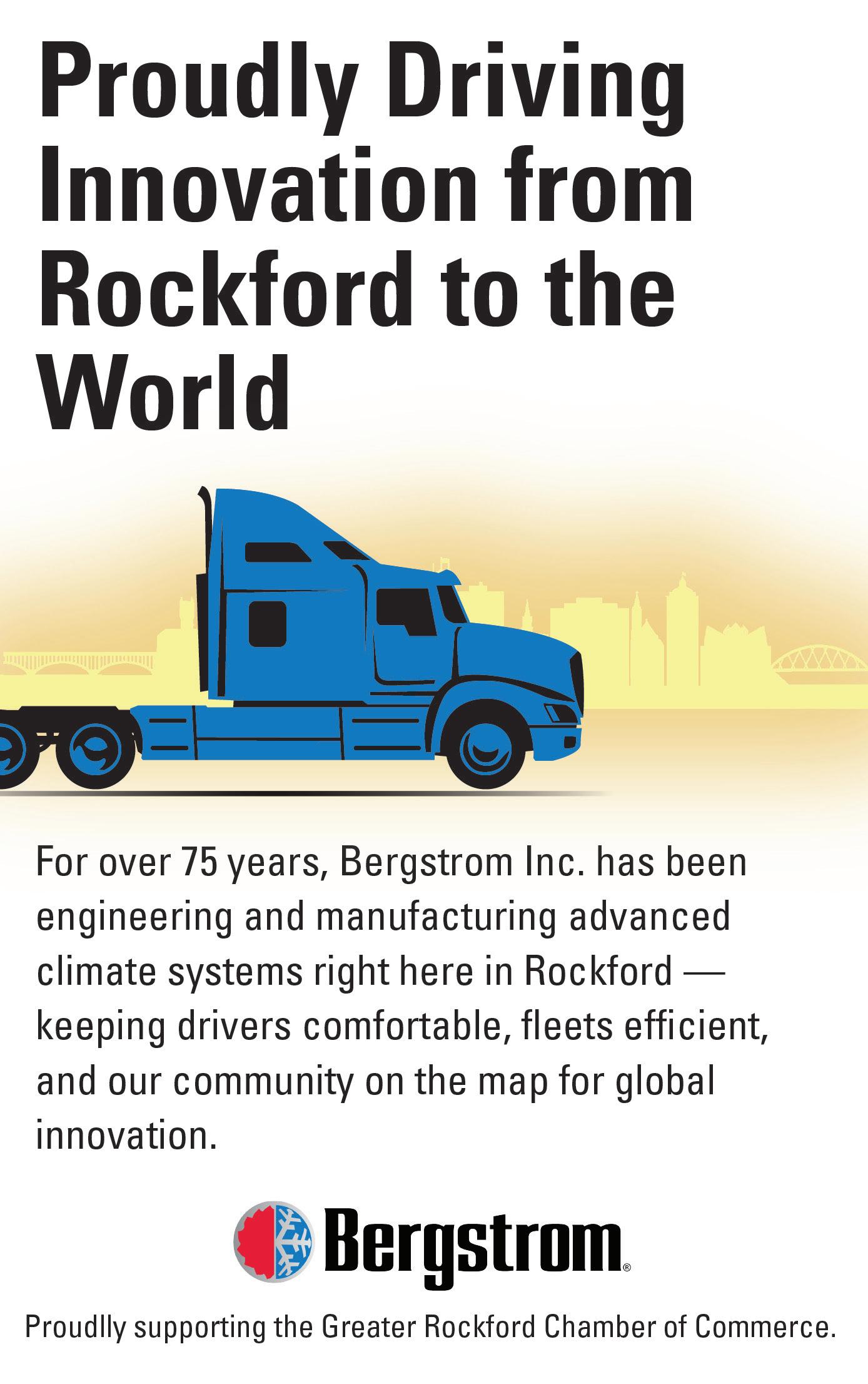
During Manufacturing Month, the 2025 Makers on the Move Bus Tour will visit manufacturing facilities and colleges across Illinois to showcase innovation, recognize today’s workforce, and inspire the next generation of makers. Please join IMEC in spreading the word and encouraging local manufacturers, educators, and community members to take part in the celebration.
MONDAY, OCTOBER 6
Ameren (Collinsville) Capital Area Career Center (Springfield) Ace Sign Company (Springfield) Eaton (Lincoln)
TUESDAY, OCTOBER 7
Three Rivers Mfg Event (Joliet) LyondellBassel (Morris) G&W Electric (Bolingbrook) Unilock (Aurora)
WEDNESDAY, OCTOBER 8
AmeriChem (Aurora)
DeKalb County EDC Event at Suter Company (Sycamore)
BorgWarner (Dixon)
P&P Industries (Sterling)
U of I Manufacturing Reception (Rockford)
THURSDAY, OCTOBER 9
Rock Valley College Manufacturing Day (Belvidere)
Midwest Packaging & Container (Machesney Park)
Hennig (Machesney Park)
Snak King (Freeport) Zurn Elkay (Lanark)
Additional stops may be added. Visit IMEC.com for info.
Teams must be equipped not only to react to issues but to anticipate them. They need systems in place to catch deviations early, analyze patterns effectively, and take corrective action quickly. That kind of strategic thinking is exactly what lean encourages.
Lean doesn’t mean avoiding automation, it means preparing your systems and people to use it well. Whether it’s a robotic arm, an AIbased quality control system, or a fully automated production cell, the basic questions still apply:
• Where is the waste?
• Where can we improve flow?
• How do we ensure quality at every step?
• Who is empowered to stop and fix a problem when they see one? It takes more oversight
Another misconception is that automation makes things easier. In reality, the initial setup of automated systems often requires more oversight not less. Success depends on clearly defined processes, stable inputs, and tightly monitored outputs. If the process being automated isn’t already lean and reliable, the automation will only amplify the existing issues.
Lean provides the structure to ensure you’re automating the right processes in the right way.
As manufacturers introduce new technologies, they often find themselves needing to take a step back and reinforce basic lean practices: standard work, root cause analysis, visual controls, and frontline problem-solving. These are not old-fashioned ideas. They are timeless tools that help people and systems
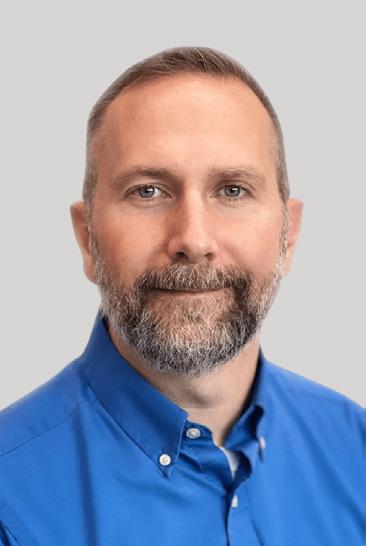
perform better, especially when change is constant.
The role of people in an automated world
One of the most important takeaways from this shift is that people remain central to manufacturing success.
Yes, machines can handle repetitive tasks and complex calculations. But it’s people who identify problems, ask why, adjust processes, and ultimately keep things running smoothly. Empowering workers to think critically, to own their processes, and to improve continuously, that’s lean. And that’s exactly what automation needs in order to succeed. In this transition to a smarter, faster manufacturing environment, lean is not something to leave behind. It’s something to lean into.
Because whether you’re operating a manual workstation or managing a fleet of smart machines, the goals remain the same: eliminate waste, deliver value, and solve problems the right way, at the right time.
Illinois Manufacturing Excellence Center (IMEC) is a team of improvement specialists dedicated to providing manufacturers in Illinois with the tools and techniques to excel and compete globally. The experienced hands-on team at IMEC works closely with its clients to deliver practical solutions that enhance productivity, innovation, and growth for long-term success.
The views expressed are those of the author(s) and do not necessarily represent those of the Greater Rockford Chamber of Commerce.
Matt Paison, is a technical specialist for IMEC and has over 25 years of experience in leadership, engineering, and operational excellence, specializing in Lean Manufacturing and continuous improvement strategies. He has successfully led transformation initiatives that drive operational efficiency, enhance business growth, and foster employee development.

By Terrance Hall, Greater Rockford Chamber of Commerce
What’s harder than explaining what I do as an economic development professional? Explaining how important business retention and expansion (BRE) visits are to the whole effort.
So what is a BRE visit exactly? To answer that, it helps to start with something more familiar in the world of business: Voice of the Customer research.
Voice of the Customer: lessons from manufacturing
Since the phrase was first coined in 1993, Voice of the Customer research has become a gold standard for manufacturers seeking to improve processes, products, and customer satisfaction. The concept is simple but powerful—listen directly to customers, capture their words in structured ways, and use that information to shape future operations.
Manufacturers value these discussions because they cut through assumptions and provide real-world insights into what buyers actually need. When done right, this feedback loop not only prevents costly mistakes but also sparks innovation, efficiency, and stronger customer loyalty.
Given that Rockford’s economy is
deeply rooted in manufacturing, it’s fitting that the most important tool we use in economic development is modeled after this very idea. We sit down with business leaders through BRE visits to hear their perspective on the local business climate, workforce, and future plans.
What is a BRE visit?
A BRE visit is a one-on-one, confidential meeting between local economic development representatives—in this case, the Greater Rockford Chamber of Commerce—and a business. The purpose is to build strong relationships, understand company needs, and identify opportunities or challenges that could impact business growth, retention, or expansion in the community.
BRE visits provide:
• A listening ear to better understand business operations, concerns, and goals.
• A direct connection to resources, programs, and partners.
• Early identification of risks or opportunities that may affect jobs and investment.
• A demonstration of community support for businesses as valued partners.
• A method for identifying and supporting business expansion projects.
BRE referrals
You can play a role in supporting our local economy by knowing when a company might benefit from a BRE visit. Consider making a referral if you hear about:
Growth opportunities
• Plans to hire a significant number of employees.
• Expansion of facilities, new equipment, or land needs.
• Considering new products, markets, or export activity.
Challenges or risks
• Difficulty hiring or retaining workers.
• Workforce training or skills gaps.
• Infrastructure concerns (utilities, broadband, transportation, zoning).
• Supply chain disruptions or cost pressures.
• Indications the business is at risk of downsizing or relocating.
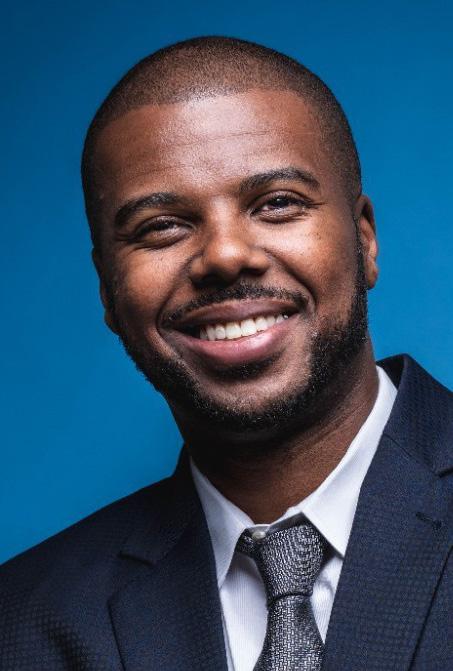
Strategic changes
• Change in ownership, leadership, or corporate strategy.
• Merger, acquisition, or restructuring.
• New regulations or policy issues impacting operations.
Engagement needs
• Interest in community partnerships or visibility.
• Desire to connect with local schools, training providers, or workforce boards.
• Questions about incentives, grants, or state/federal programs.
Why It matters
Every visit helps GRCC’s BRE team support businesses before issues escalate or opportunities are lost. Together, we can ensure companies have the resources, confidence, and community support they need to stay, grow, and thrive here.
If you are interested in taking part in a BRE visit or making a referral, please contact Terrance at thall@rockfordchamber.com or 815-316-4310.
Terrance Hall is a partner with Eight Fifteen Impact, a strategic consulting firm specializing in economic development strategy and hands-on implementation. The Greater Rockford Chamber of Commerce is partnering with Eight Fifteen Impact to strengthen BRE visits for businesses in the Rockford Region.

By JP Kale, Reinhart Boerner Van Deuren s.c.
Amid ongoing supply chain disruptions, local manufacturers and business leaders are innovating how and where goods are produced. But these changes carry significant legal risks that must be addressed before relocating operations or suppliers.
Supply chains have come under increasing scrutiny over the past few years. Beginning during the pandemic, the flow of goods and materials through seemingly reliable trade routes was substantially restricted if not shut off entirely. This disruption caused manufacturers and retailers to begin looking to reshore or near-shore at least some of their manufacturing or supply base. Just as new supply chains were being established, a new tariff regime was implemented, which has caused further reevaluation of supply logistics. Businesses need a predictable supply of retail goods and manufacturing supplies. However, in an eagerness to address these new business challenges, companies should not lose sight of the legal concerns with manufacturing in new territories.
For well-established supply networks, often a company has done its due diligence in ensuring that it has secured intellectual property rights in that jurisdiction, as well as considered competitor intellectual property rights. To this point, it is important to remember that intellectual property rights are territorial; that is, a country can only enforce patents granted in or extending to that country. In other words, a U.S. patent is not enforceable in China just as a Chinese patent is not enforceable in the U.S. For this reason, mitigation of legal risk with respect to intellectual property should consider the laws and protections available in each country implicated in a company’s supply chain.
For example, a company may have researched the potential patent liability for manufacturing its product in China by reviewing and avoiding the scope of competitors’ Chinese patents. However, if that manufacturing is relocated to Vietnam or Thailand, for example, the territorial rights of patentholders in those countries must be taken into account. Neglecting this factor could otherwise make the seemingly cost-effective move of a link in the supply chain costly in the long term if it runs afoul of patentholders’ rights in the new country.
From a protection standpoint, relocating manufacturing may also
mean that patent protection is no longer covering the manufacturing process or product. While ultimately this may not seem like it matters if the end market is the U.S. and the company also has patent protection in the U.S., the inability to enforce patent protection in the new manufacturing market may mean that your supplier is able to supply others in that country. Put differently, a company’s patent in the previous manufacturing country could be used to enforce restrictions on a supplier in that country, but without patent protection in the new manufacturing country, there is one less tool to enforce exclusivity. The supplier may then flood the local market with a glut of the company’s product. And once the product enters the flow of international commerce, a company may find knockoffs of its product on websites like Amazon, eBay, and Alibaba. These websites may offer takedown services, but this creates a never-ending game of whack-a-mole in which new seller pages spring up as fast as old ones are taken down.
When considering trademark rights, a company entering a new jurisdiction may find that it is not even entitled to use its own name because another company may have already adopted that name in the new jurisdiction. As with patents, trademark rights are territorial. But unlike patents, there is no need to be the inventor or creator in order to obtain rights. In other words, trademark rights are conferred by using the trademark in the relevant jurisdiction. If Company A is not actively using its name in a particular jurisdiction, then Company B may take the opportunity to adopt that name in that area. This situation could ultimately prevent Company A from using its own name there in the future.
Patent and trademark rights are associated with creativity and innovation, but they are ultimately tools of business. The financial reality of a company may dictate strategy with respect to supply chain logistics, but intellectual property is critical and must be considered in that calculation. As outlined above, existing intellectual property protections should be considered when deciding whether to move a link in a supply chain, and offensive and defensive strategies should be updated to reflect the territorial scope of intellectual property rights.

Reinhart is a full-service, business-oriented law firm. With more than 200 lawyers, they serve clients throughout the U.S. and internationally with a combination of legal advice, industry understanding, and superior client service. For help navigating international intellectual property rights for
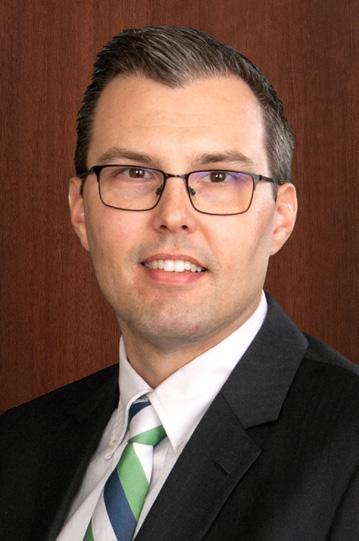
your business, please contact an attorney at Reinhart for assistance.
The views expressed are those of the author(s) and do not necessarily represent those of the Greater Rockford Chamber of Commerce.
JP Kale is a shareholder and registered patent attorney in Reinhart’s Intellectual Property Practice. He advises inventors, startups, and multinational corporations on the complexities of the patent process, providing sophisticated IP protection strategies that involve utility and design patents, trade secret protection, trademarks, and copyrights, both domestically and internationally.
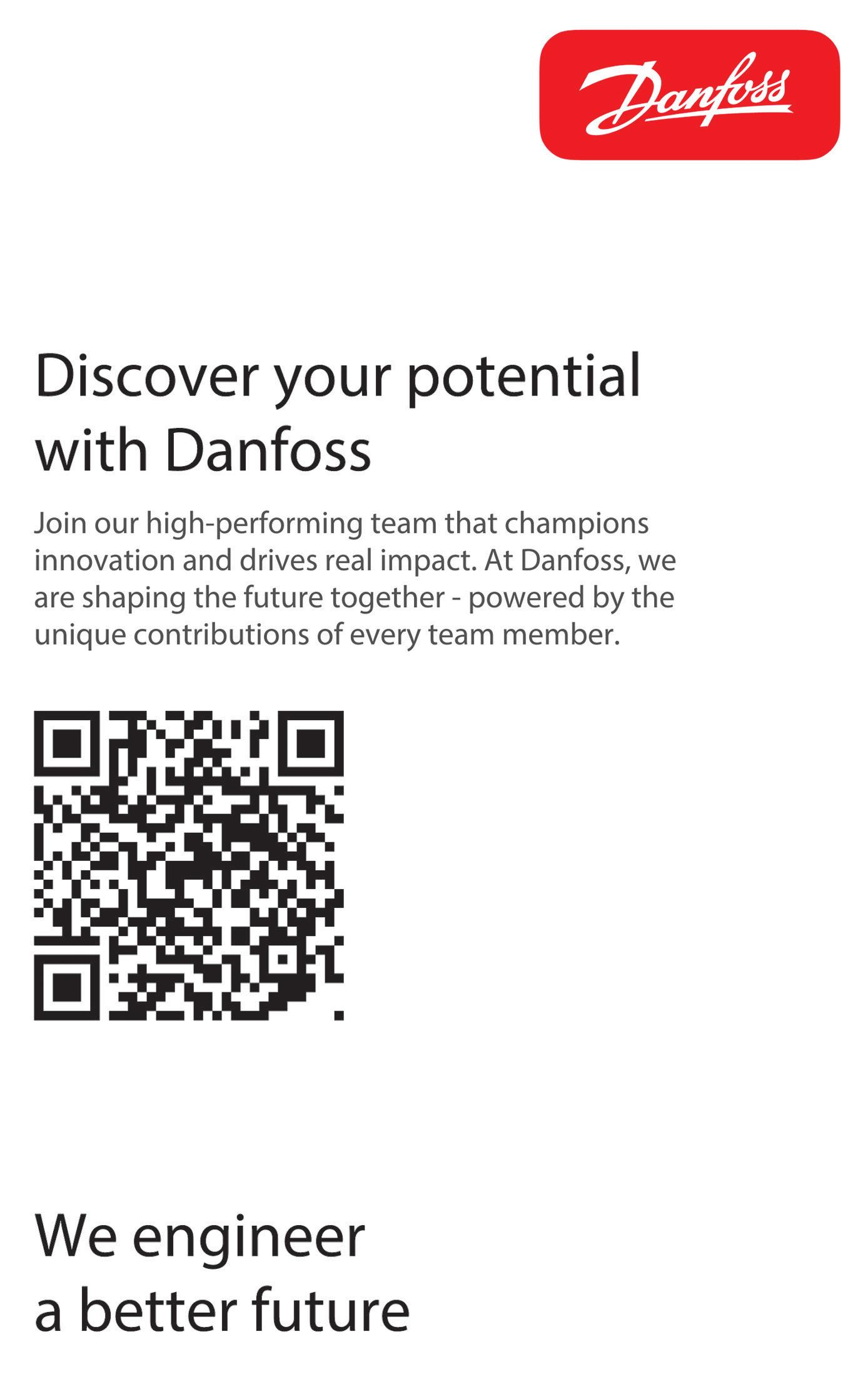
Each quarter, the Greater Rockford Chamber of Commerce (GRCC) conducts a survey of its members and other local professionals to gauge business and economic insights. Highlights of the Q3 survey results are published here and a full report was shared with GRCC members, as well as other survey participants by request. If you wish to participate in future surveys and receive advance copies of the full report, please email info@rockfordchamber.com.
The following is a comparison of key results from the GRCC 2025 Business Sentiment Surveys from Q1, Q2, and Q3.
In Q3, nearly 60% of businesses considered themselves to be in a healthy position, a significant increase from the previous two quarters. The percentage of respondents that considered their business health poor or average declined.
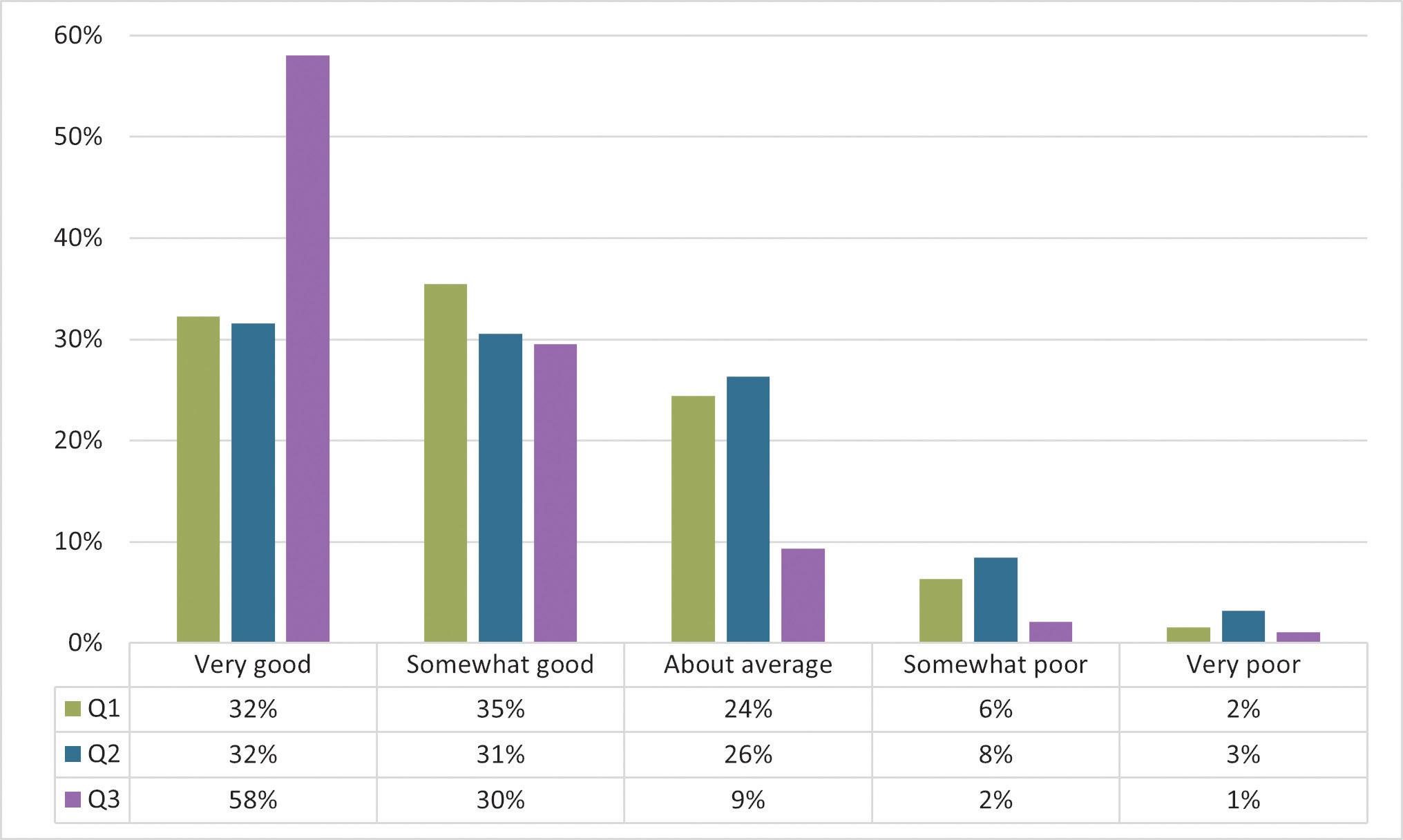
In Q3, respondents identified expanding product or service offerings as the biggest opportunity for revenue growth. Entering new markets dropped to third as increasing online sales jumped to second place.
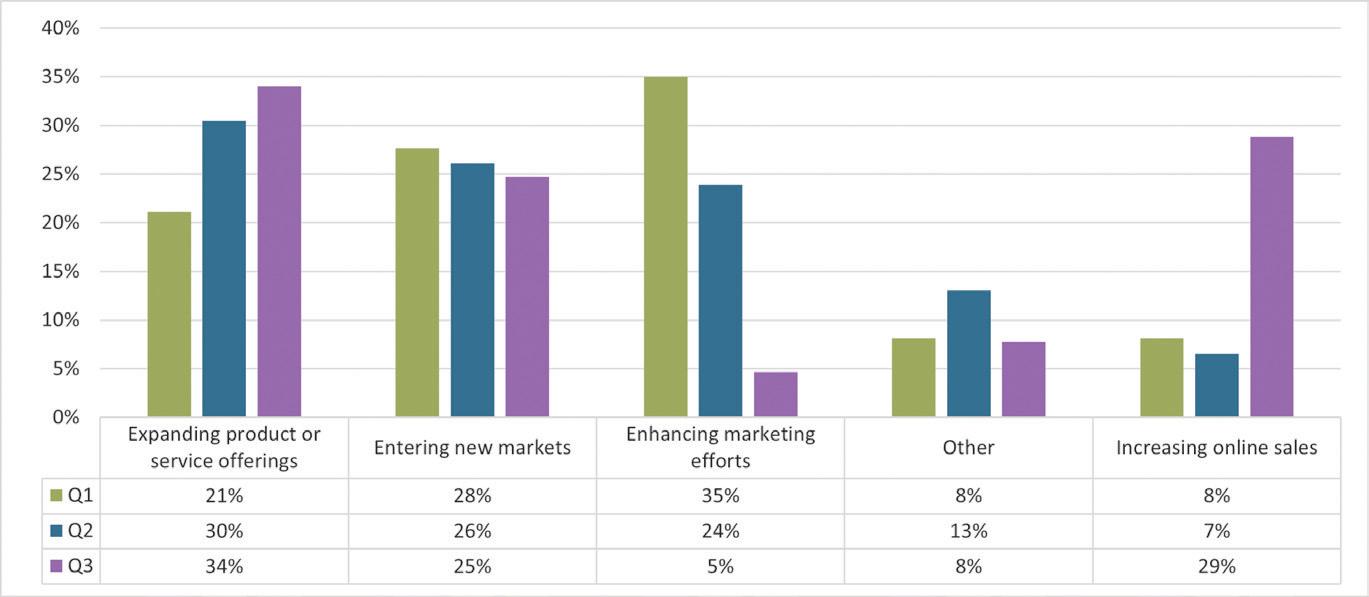
More respondents reported an increase in staff in the third quarter, continuing the upward trend from the previous two quarters. The number of respondents who reported reducing their staff increased slightly.
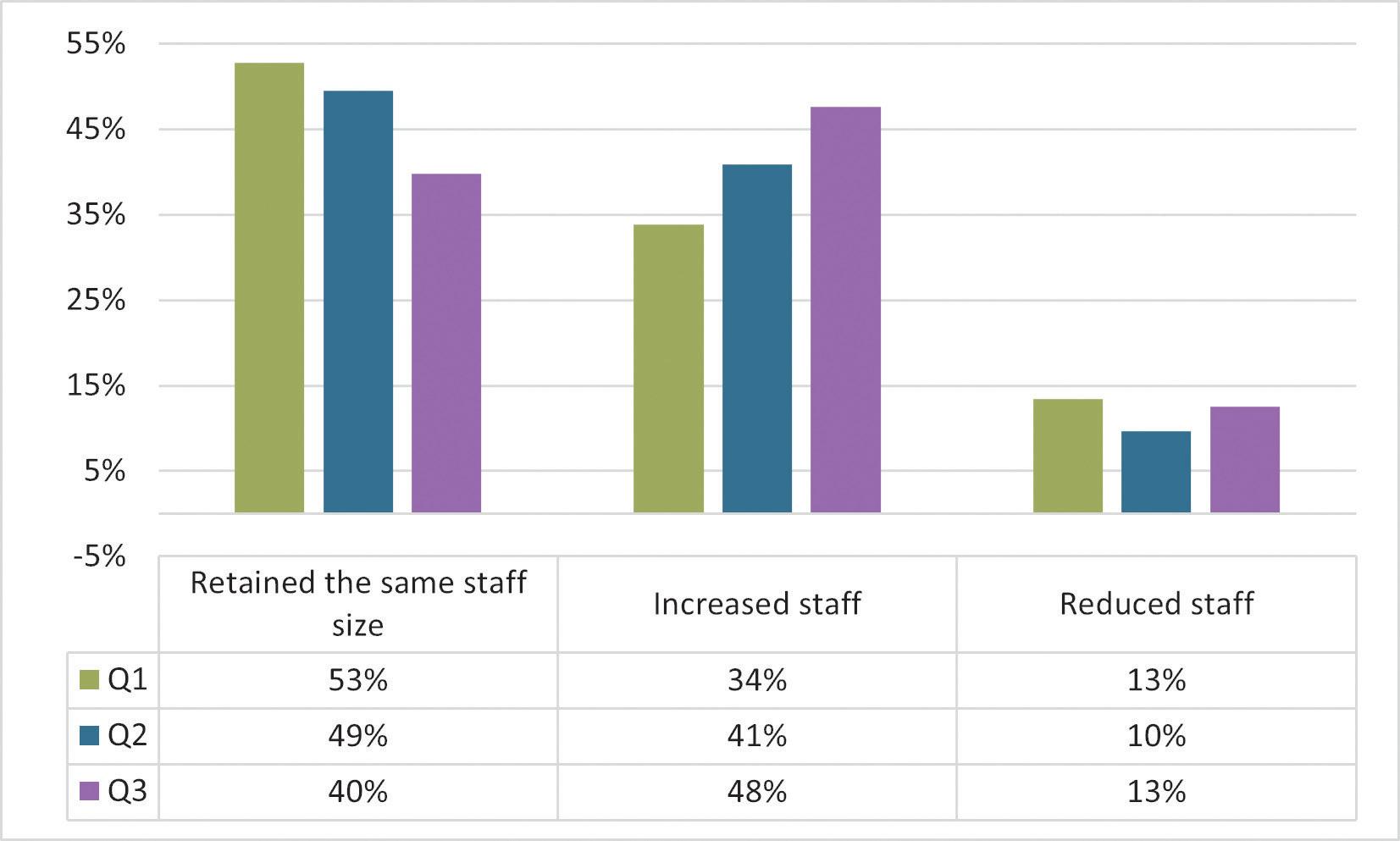
Most respondents (65%) believed that the U.S. economy was average or somewhat good, with somewhat good and very good increasing in Q3.
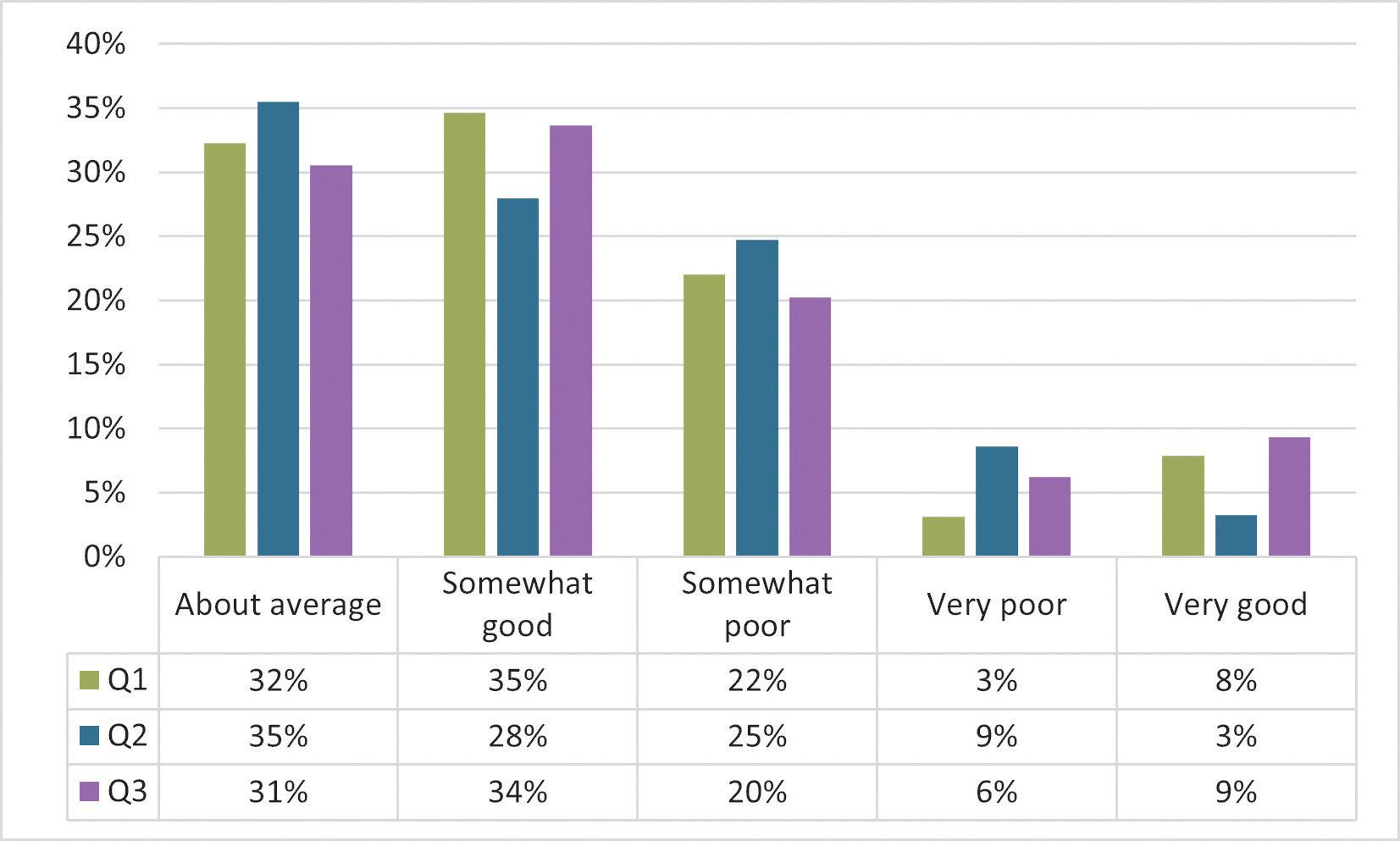
Confidence in the regional economy increased substantially between Q2 and Q3. The share of respondents who reported the local economy was somewhat good increased by 15%, while those who believed it was very good increased by 2%.
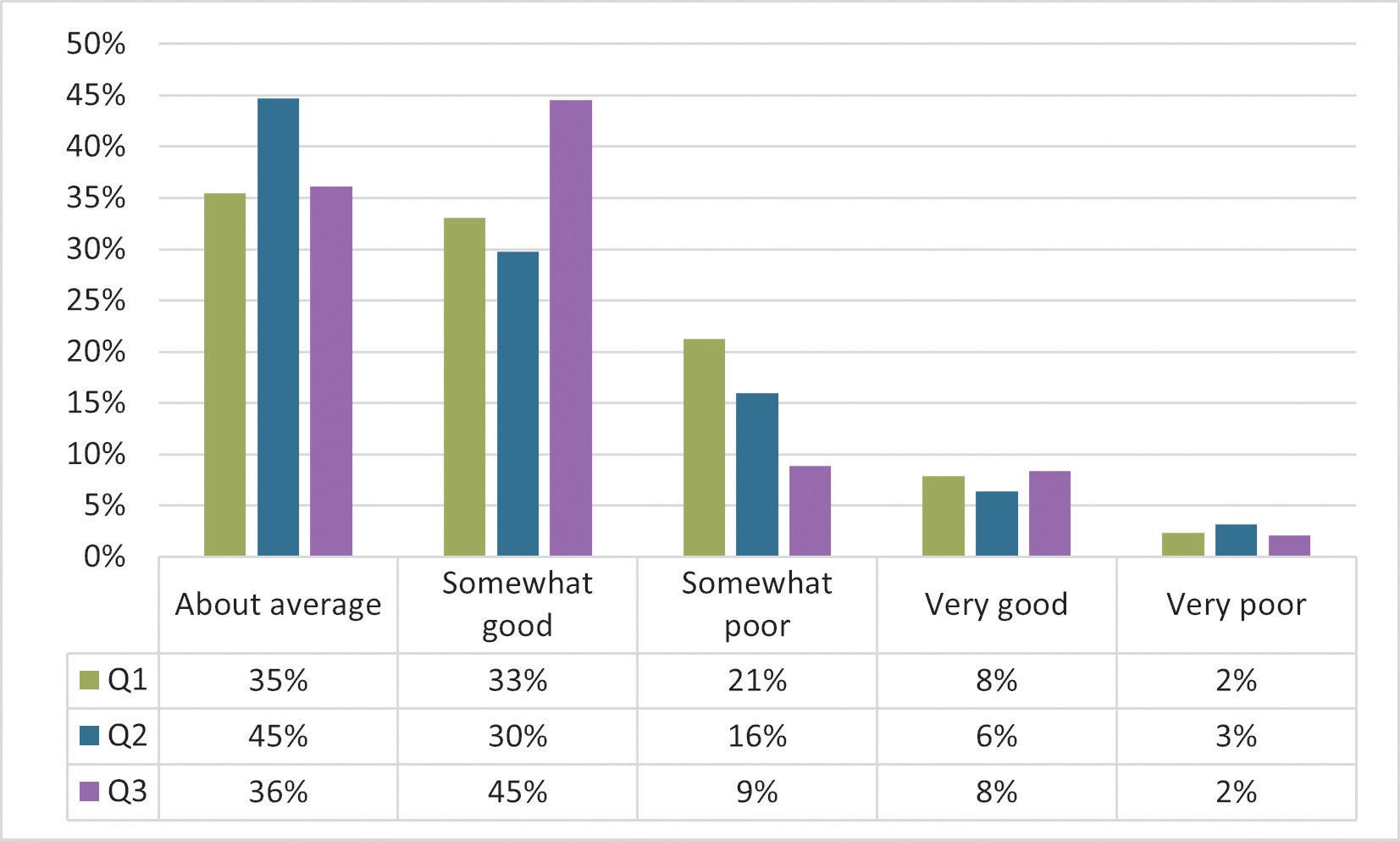
Concerns over cash flow dropped significantly in Q3, with a nearly 20% spike in respondents who were very comfortable with their cash flow.
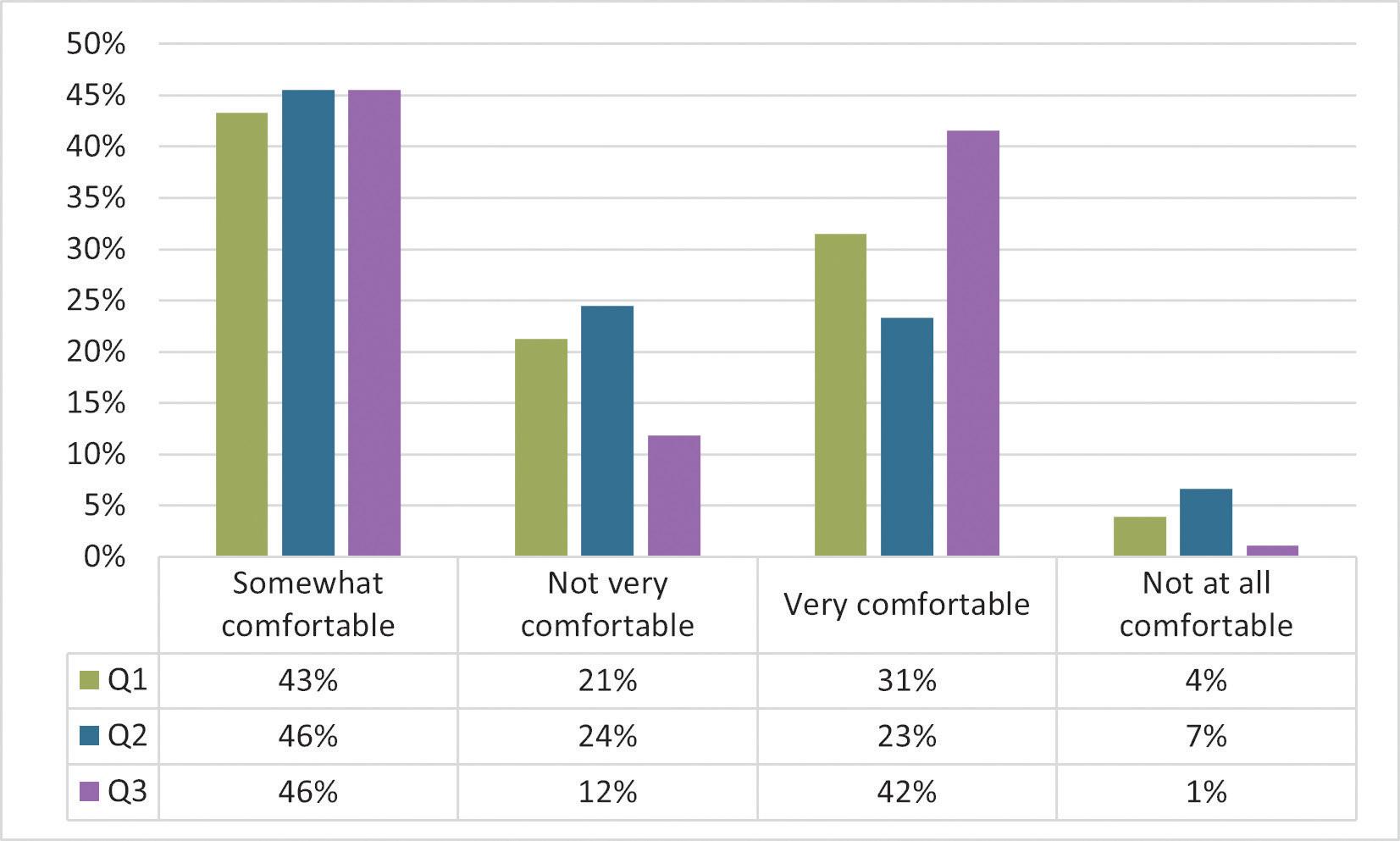
Businesses appeared to be far more confident moving into the third quarter. The share of respondents planning to increase investment more than doubled.
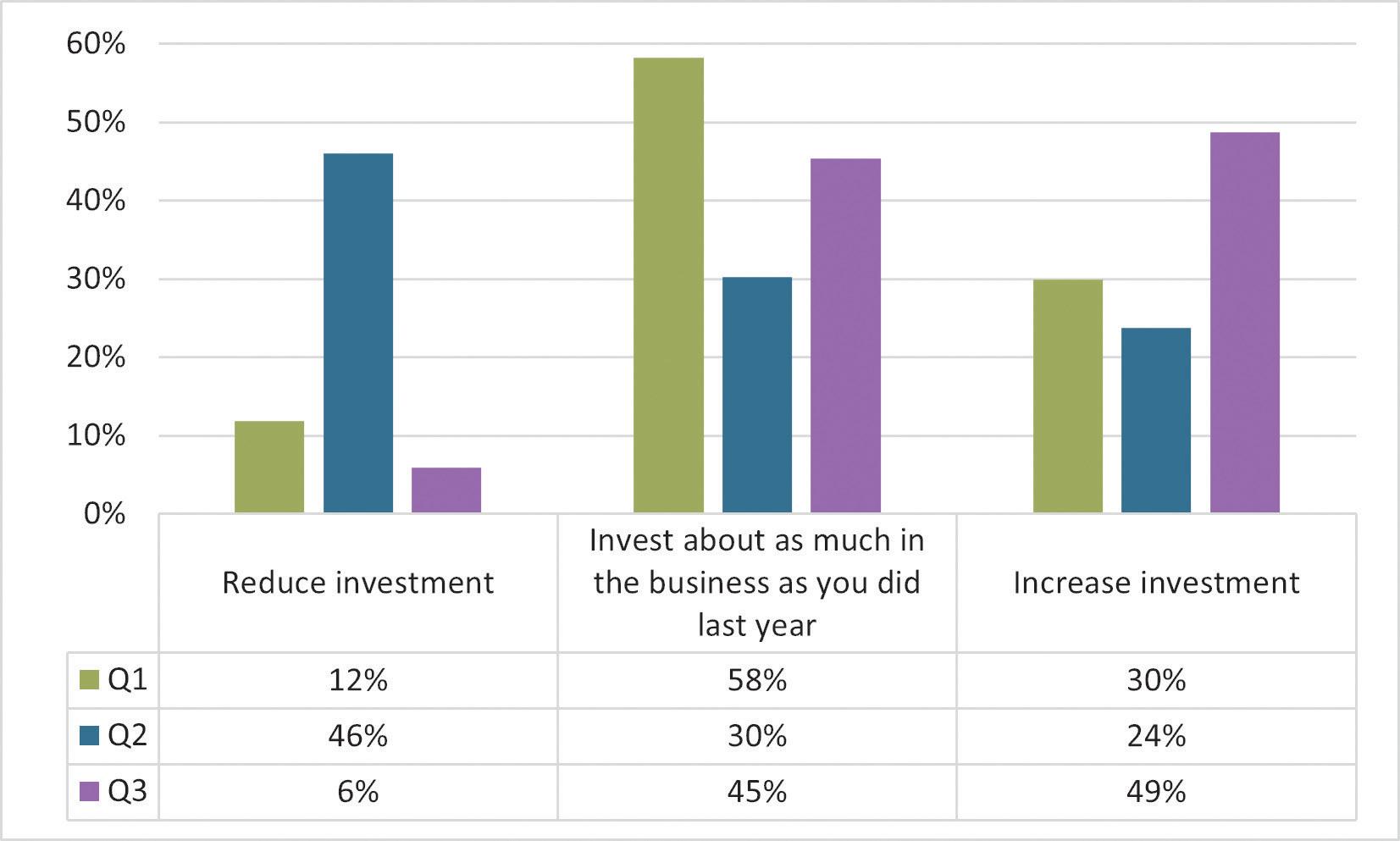
Nearly three-quarters of respondents reported that they expect revenue to increase in the year ahead, a 14% jump from Q2. The share of respondents who believed that revenues would decline fell by half (6%).
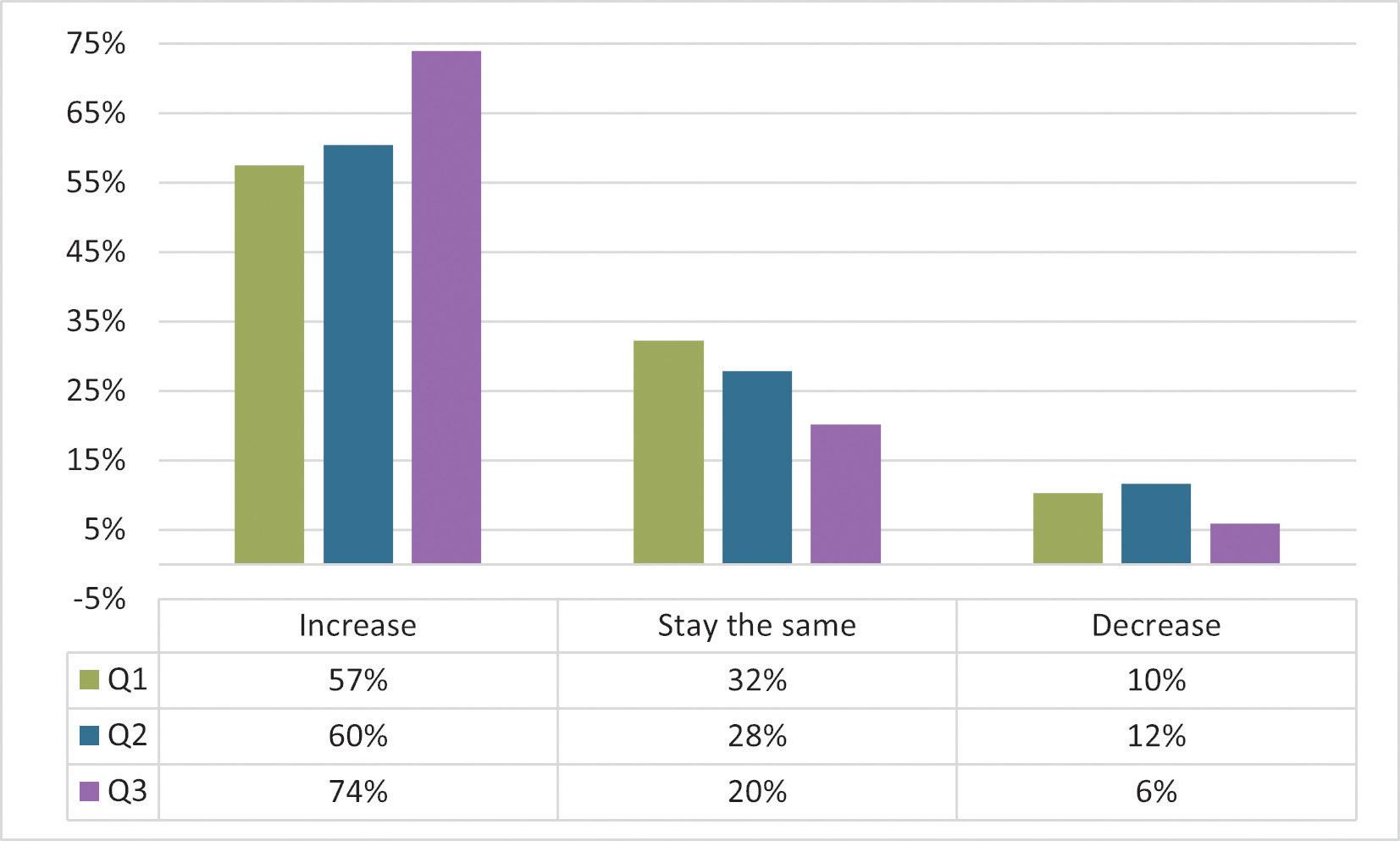
The following is a comparison of key results between the GRCC 2025 Q3 Business Sentiment Survey and the U.S. Chamber of Commerce (USCC) Small Business Index for Q3 2025.
Most respondents, both locally and nationally, believed that their businesses were in good health. A far greater share of local respondents reported that their business was in very good health.
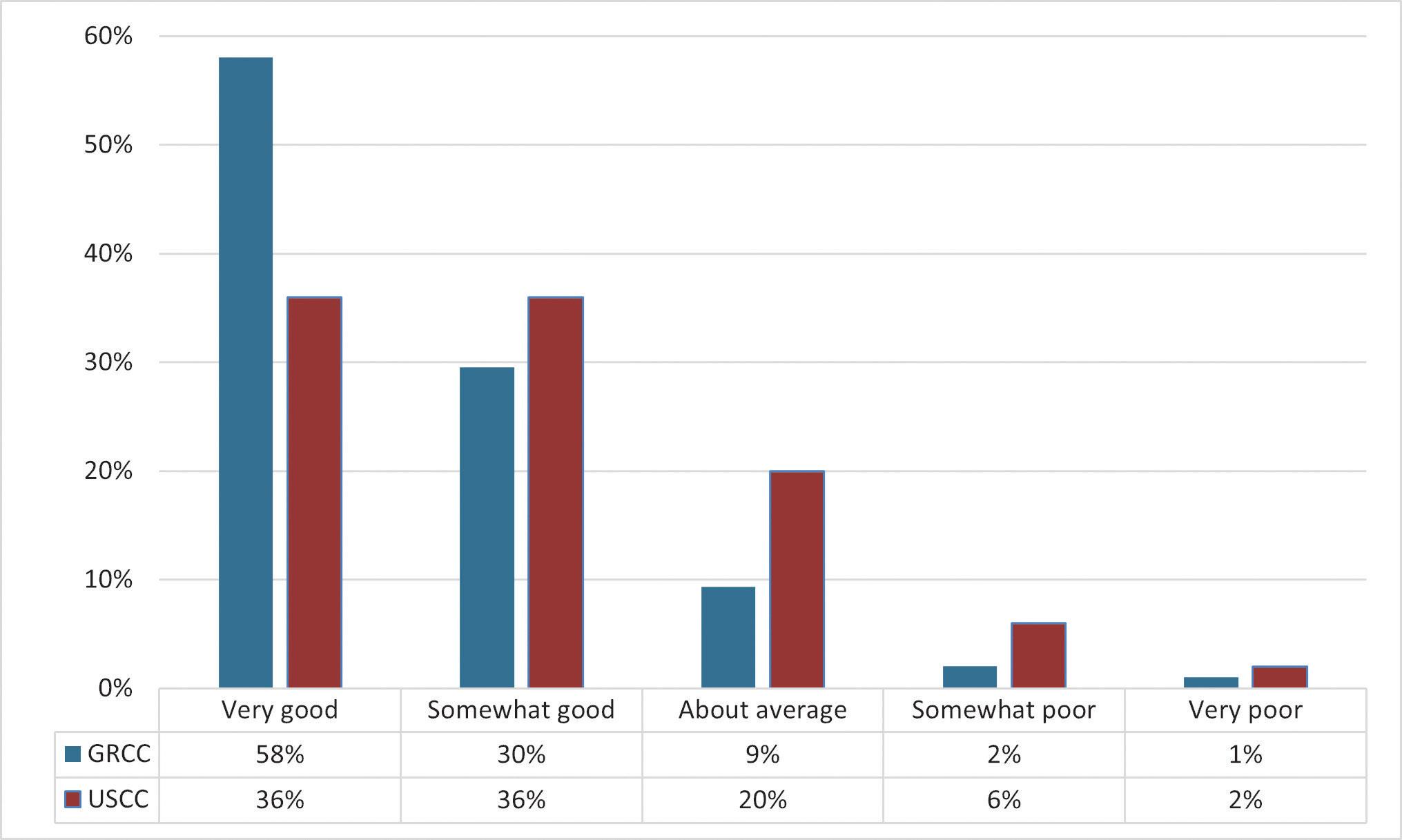
In the third quarter, local respondents believed the health of the U.S. economy was stronger than that of national respondents, though more national respondents believed the U.S. economy was very good.
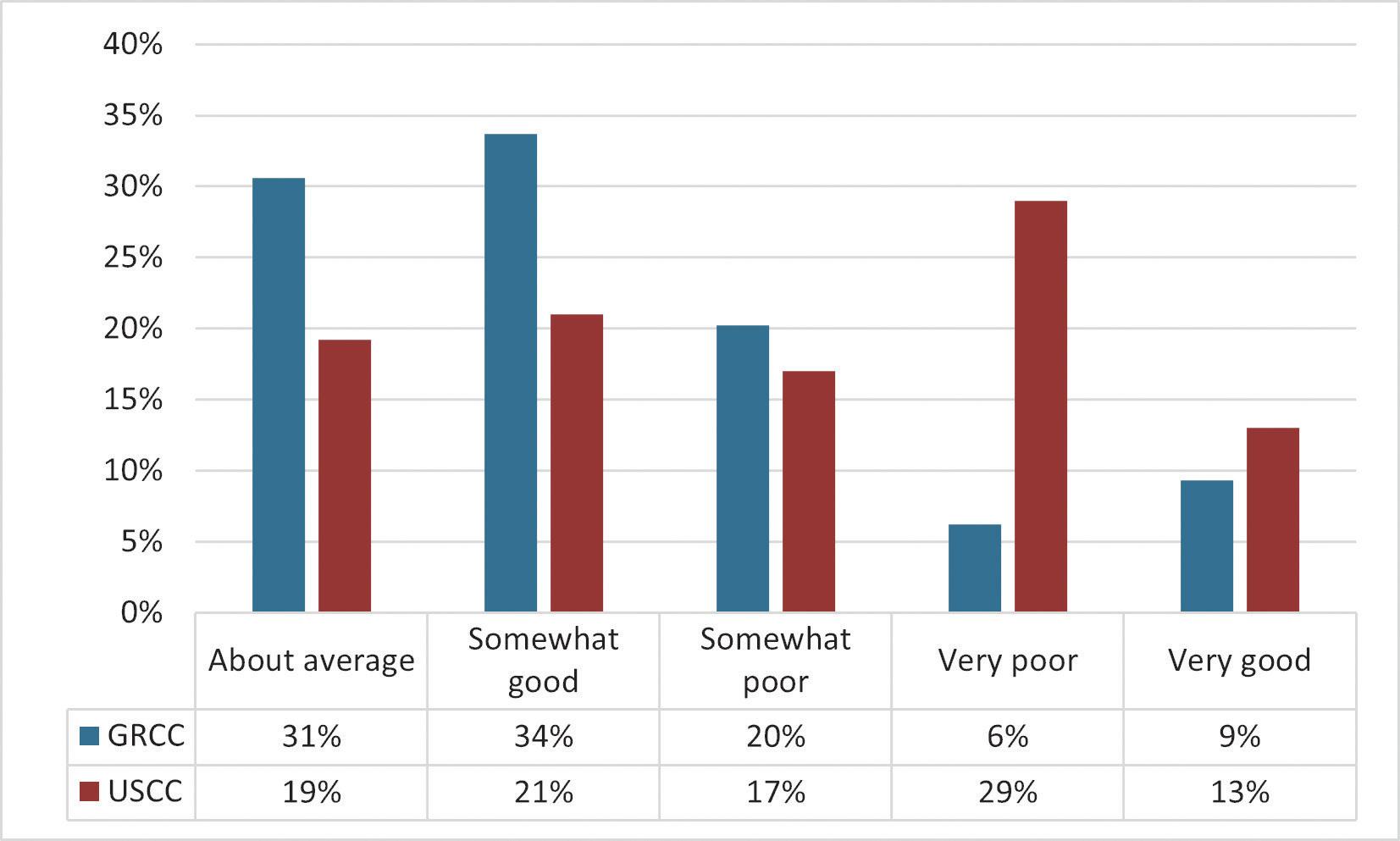
Local respondents expressed stronger confidence in the local economy compared to national respondents, though more national respondents believed that the health of their local economies was very good.
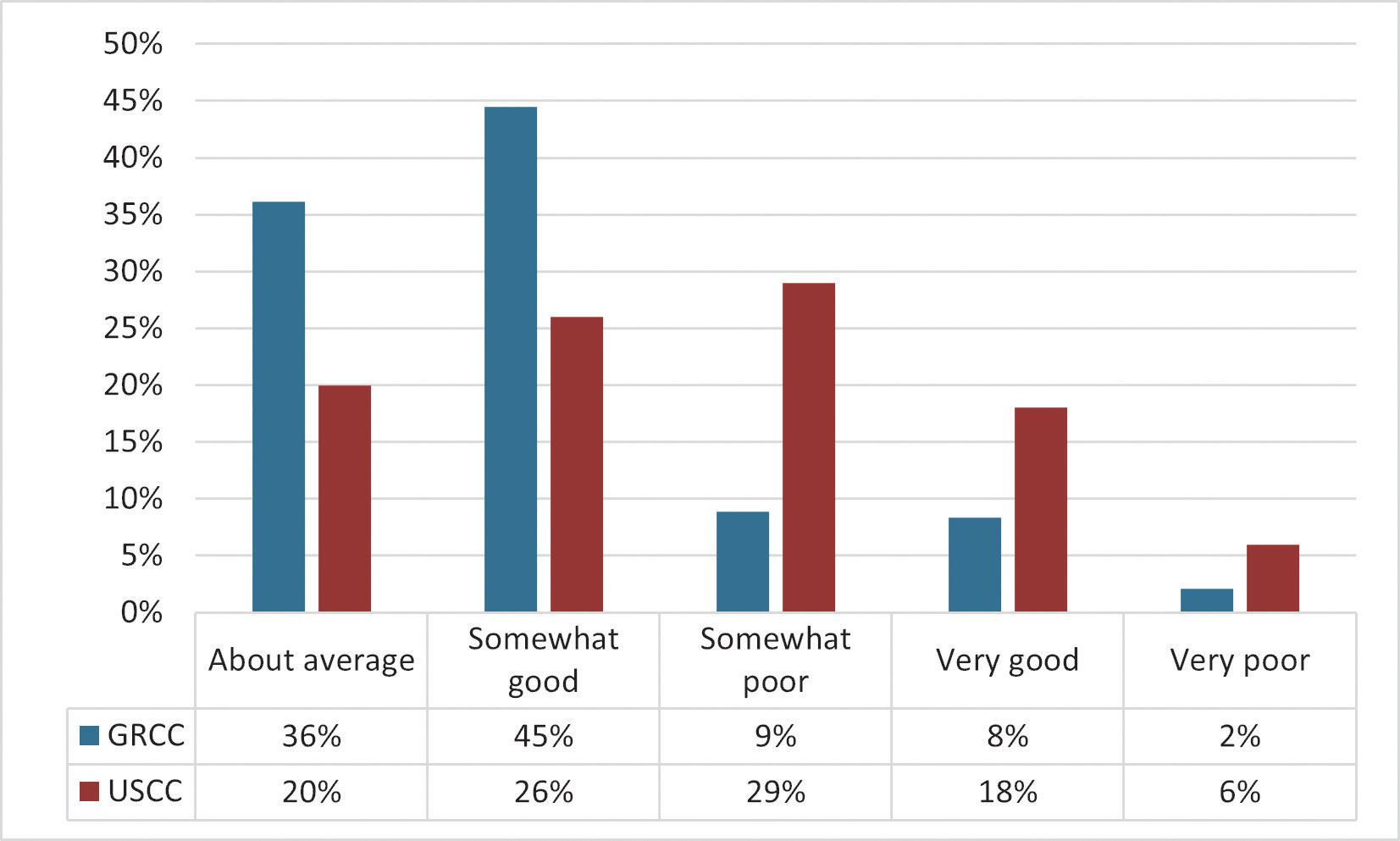
In Q3, more local respondents (20%) reported an increase in staff compared to national respondents. However, more local companies also reported a reduction in staff compared to national respondents.
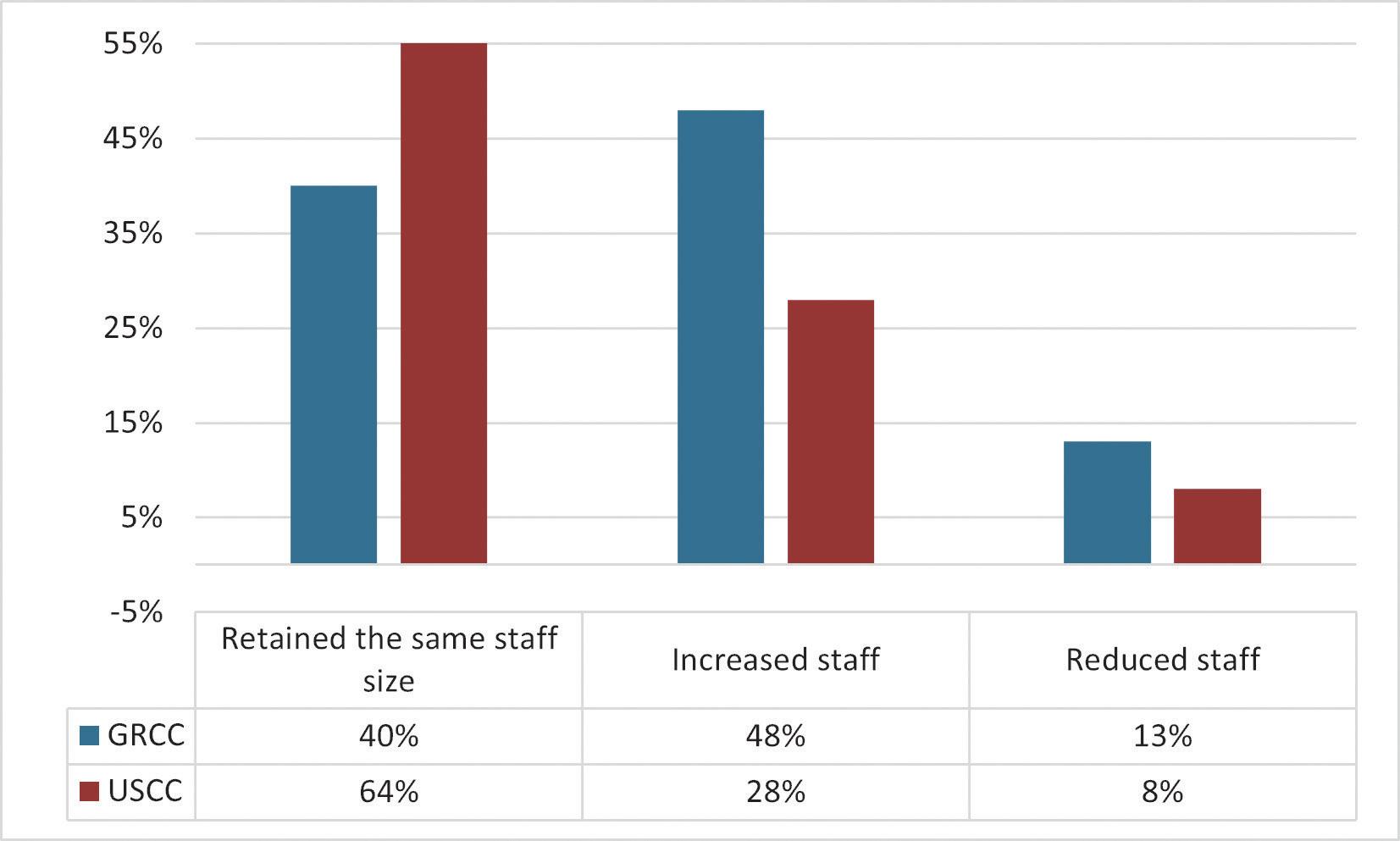
The GRCC is committed to being a member-driven organization. Our program topics, professional development offerings, and government advocacy strategies are based on these survey results and other member feedback (formal and informal). We use this information to determine what local businesses need and how effective we are at delivering on those priorities. That’s why your participation with these quarterly surveys is so critical.
Special thanks to everyone who participated in the Q3 survey and to Region 1 Planning Council for administering the survey and compiling the results.

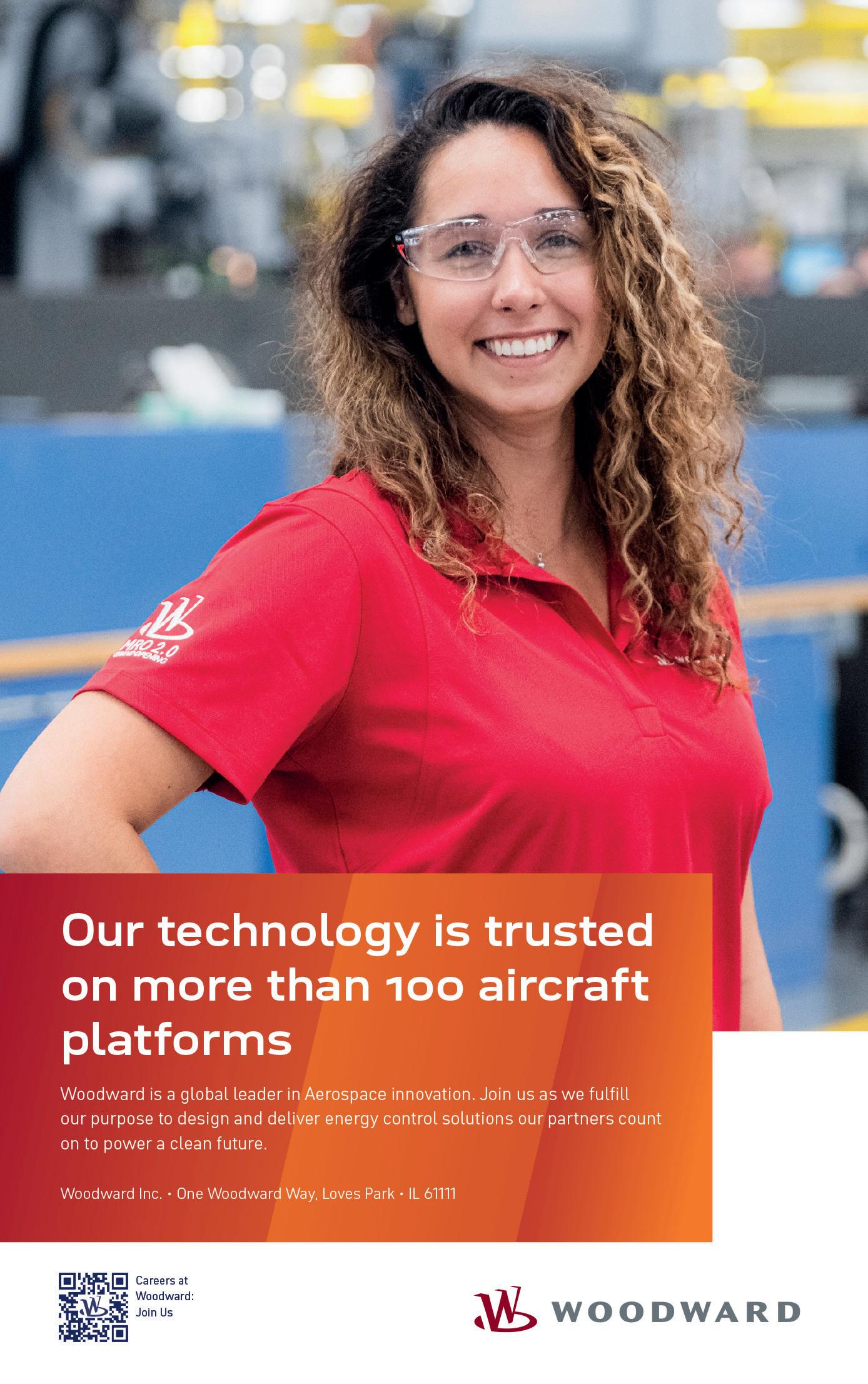
By Bethany Mead, Career Education Associates of North Central Illinois GUEST COLUMNIST
October is National Manufacturing Month, and to celebrate, the Career Education Associates of North Central Illinois (CEANCI) and Rock Valley College (RVC) are hosting the Manufacturing Day Career Expo, Oct. 9, 8:30 a.m.-1 p.m., RVC Advanced Technology Center, 1400 Big Thunder Blvd. in Belvidere.
To help break the stigma of manufacturing as a “dirty job,” CEANCI works with educators and manufacturers to give students work-based learning experiences that highlight modern manufacturing. We believe that if students have real-life experiences with manufacturing, they may develop an interest in the industry and ultimately stay local to seek employment, easing critical shortages in the job market.
Not all manufacturing jobs require “getting dirty” or running a machine. Many facilities have clean, climatecontrolled environments, and most offer careers in engineering, marketing, logistics, and human resources as well as hands-on manufacturing roles. Like many other industries, today’s machine shops support volunteerism (which is very important to young job seekers) and work with advanced technologies, such as large-scale 3D printing and robotics.
At the Manufacturing Day Career Expo, students in the Rockford Region will make connections with manufacturers through the The Makers on the Move Bus and have one-on-one conversations with 20 local manufacturing exhibitors. The RVC Advanced Technology Center will have demo stations for welding, CNC, 3D, and robotics, and Bill Isham, RVC welding chair, will speak on how to prepare for the workforce.
Thanks to CEANCI programs and partnerships, students in the Rockford Region will hear from guest speakers and tour local operations throughout
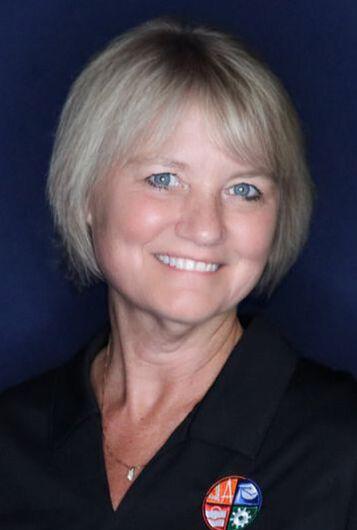
Manufacturing Month and beyond. They’ll learn about the varied jobs in manufacturing, current openings, salary ranges, educational requirements, and the skills they might acquire in these jobs. These connections between students and manufacturers can lead to internships or job opportunities, making it beneficial for both parties.
Historically, we’ve seen students secure internships or jobs through the Manufacturing Day Career Expo. For example, Swenson Spreader of Lincolnwood, Illinois, worked with Stillman Valley High School to create a job contract allowing five students to work part-time while going to school.
Another partner, Tyler Thomason of 425 Manufacturing, said, “We’re proud to support and grow our workforce right here in our community. We’ve hired multiple team members from local school districts and currently employ two recent graduates from Rock Valley College’s welding program. Partnering with local teachers and organizations, such as CEANCI, has been a great way to connect with emerging talent, and we continue to prioritize hiring directly from local colleges and school districts.”
Area manufacturers and guests are welcome to attend the Manufacturing Day Career Expo. If you can’t attend but are interested in further student collaboration, you’re in luck. CEANCI plans to continue working with local manufacturers to host student tours throughout the remainder of the 2025-2026 school year. To learn more, contact CEANCI Community Outreach Coordinator Beth Mead at 815-921-8471 or b.mead@ceanci.org.
The views expressed are those of the author(s) and do not necessarily represent those of the Greater Rockford Chamber of Commerce.
Bethany Mead is the community outreach coordinator for the CEANCI and is an active community member advocating for employer and student connections. Beth serves on various boards, including WOTM (Women of Today’s Manufacturing), Elev815, and Life Church.
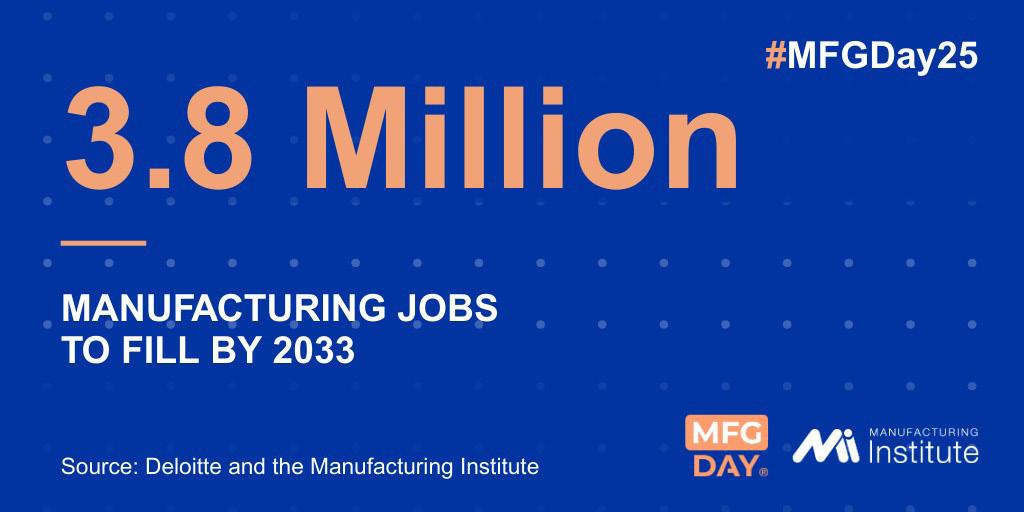
By Joel Huotari, WilliamsMcCarthy LLP
In today’s competitive business world, ideas, processes, and know-how are often more valuable than physical assets. For manufacturers, engineers, and innovators, trade secrets—like proprietary formulas, customer lists, or manufacturing techniques—can be the key to long-term success. Understanding how to protect these assets under Illinois and federal law is critical.
What is a trade secret?
A trade secret is confidential business information that provides a company with a competitive advantage. This could include:
• Recipes, formulas, or chemical processes.
• Technical designs, prototypes, or software code.
• Pricing models or supply chain strategies.
• Customer or vendor lists.
To qualify as a trade secret, the information must not be publicly known, must derive value from being secret, and the owner must take reasonable steps to keep it confidential.
State and federal trade secrets law
Illinois protects trade secrets under the Illinois Trade Secrets Act, which mirrors the federal standard. It gives businesses the right to sue anyone who misappropriates (steals, discloses, or uses without consent) a trade secret.
At the federal level, the Defend Trade Secrets Act (DTSA), passed in 2016, allows trade secret owners to bring cases in federal court and provides additional tools, such as seizure of stolen information in extreme cases. DTSA also protects whistleblowers who report misconduct using confidential information.
Both laws offer similar protections:
• Injunctive relief (court orders to stop further misuse).
• Monetary damages (for actual loss or unjust enrichment).
• Punitive damages and attorney’s fees (in cases of willful misconduct).
Best practices to protect your trade secrets
Legal protections only apply if you take active steps to protect your information. Here are key strategies every business should consider:
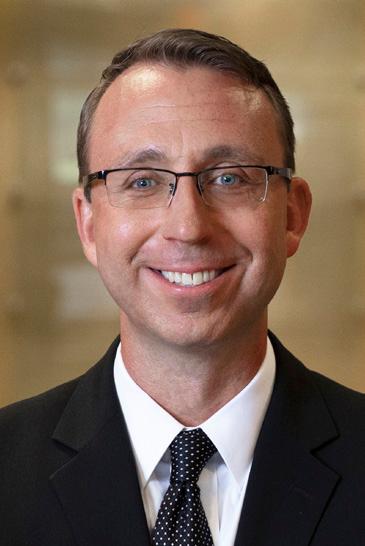
1. Identify and classify your trade secrets
Start by auditing what information your company considers confidential. Label sensitive documents and files clearly. Not everything needs to be a trade secret—focus on what gives you a competitive edge.
2. Use confidentiality agreements (NDAs)
Have employees, contractors, and vendors sign non-disclosure agreements before accessing sensitive information. For employees, include confidentiality clauses in their employment agreements.
3. Limit access
Use the “need-to-know” rule. Restrict access to trade secrets to only those who require it to do their jobs. Implement digital access controls and physical security measures for sensitive materials.
4. Train your team
Educate employees about what trade secrets are, why they matter, and how to handle them. Reinforce these principles during onboarding and through regular training.
5. Protect digital assets
Use strong passwords, encrypted file storage, and secure networks. Regularly review IT policies and monitor for unusual activity or data transfers.
6. Follow exit protocols for departing employees
When someone leaves the company, remind them of their confidentiality obligations, retrieve company devices, and restrict system access immediately.
7. Document your efforts
Courts look at whether you took “reasonable measures” to protect your secrets. Keep records of your policies, training programs, and security measures.
Trade secrets can be more valuable than patents or trademarks, because they don’t expire and don’t require public disclosure. But once they’re out, they’re gone. By taking proactive steps to safeguard your confidential knowhow, your business stays competitive and legally protected.
The views expressed are those of the author(s) and do not necessarily represent those of the Greater Rockford Chamber of Commerce.
By Mark D’Angelo, Rock Valley Credit Union
Protecting your digital presence and assets is more important than ever. Your email provider, internet service provider, financial institution, and security software all work hard to combat fraud and illegal cyber activity on your behalf. But is that enough? At the end of the day, you are ultimately responsible for your own cybersecurity hygiene—and the stakes are high.
To put things in perspective, here are some 2024 statistics reported by the Federal Trade Commission’s (FTC) Consumer Advice website (consumer. ftc.gov/consumer-alerts/2025/03/topscams-2024):
• 2.6 million fraud reports filed.
• $12.5 billion reported lost in total.
• $5.7 billion lost to investment scams.
• $2 billion lost to bank and payment fraud.
• $1.9 billion lost in social media scams.
• More than one in three people who reported a scam also reported losing money.
These numbers are based on reports submitted to the FTC, which means there could be many more unreported fraud victims. It was also noted that the median loss for an investment scam is $9,000—not a small chunk of change by any means. Younger people tend to fall victim more often, but older adults lose significantly more money overall than any other age group. As I mentioned, the stakes are high. Fraud attempts happen daily and across multiple digital channels. Sadly, it’s all too easy to find someone who has either personally fallen victim to a scam or knows someone who has.
With fraud all around us, what can we do about it? Should we completely disconnect from the grid? While that would certainly reduce your chances of becoming a victim, it’s simply not practical in today’s world. Instead, you can safeguard your digital presence by following a few simple practices:
• Enable multi-factor authentication (MFA) wherever possible and never
share your MFA codes with anyone.
• Verify suspicious phone calls by hanging up and calling back using a trusted, official number.
• Watch for urgency and threats— fraudsters often pressure you to act quickly or face consequences.
• Keep your inbox tidy so it’s easier to notice suspicious or out-of-place emails.
• Use caution on social media marketplaces. Never pay in advance, and remember: If it sounds too good to be true, it probably is.
• Monitor your finances by regularly checking bank statements, reviewing transactions, and setting up credit alerts.
• Be cautious with links in text messages, which may direct you to malicious websites.
• Pause and ask yourself two questions:
o Was I expecting this email, text, or attachment?
o Am I only tempted to open it because I’m curious?
While that list isn’t all-encompassing, it provides a strong starting point for countering many attempts that could otherwise lead to identity or financial fraud. The reality is, at some point in your digital journey, you’re likely to receive a fraudulent text, email, or call. But with the right awareness and preparation, you can stand guard against these attempts. At the end of the day, you are your own best advocate for staying safe in the digital world.
Rock Valley Credit Union is a not-forprofit financial institution owned and operated by its members since 1968. Its field of membership includes Winnebago, Boone, Ogle, DeKalb, Lee, and Stephenson Counties in Illinois; and Green, Rock, and Walworth Counties in Wisconsin. RVCU is headquartered in Loves Park, with locations in Rochelle and Machesney Park. Visit rockvalleycreditunion.org.
The views expressed are those of the author(s) and do not necessarily represent those of the Greater Rockford Chamber of Commerce.
Joel Huotari is a partner at WilliamsMcCarthy LLP. He specializes in intellectual property and business litigation for clients ranging from individuals to multinational corporations. He can be reached at Jhuotari@wilmac.com or (815) 987-8982.
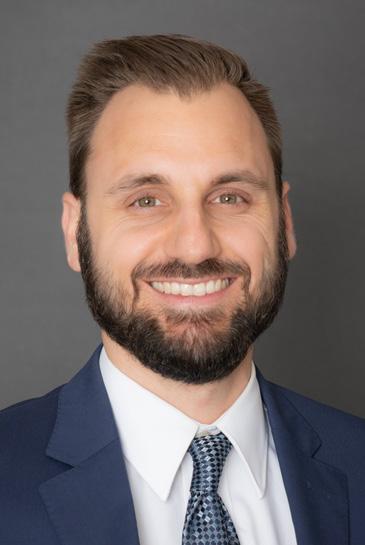
Mark D’Angelo is the vice president of innovation and technology at Rock Valley Credit Union. With over 10 years of experience in the IT industry, he specializes in project management, systems automation, and has a strong focus on digital and network security. Mark is passionate about empowering people to take charge of their own digital security.
By Diego Valdivia, YWCA Northwestern Illinois
Rockford’s history and identity are deeply tied to its manufacturing base— an industry that has shaped the region for generations and continues to fuel its economic growth. Hispanic and Latino residents have been and remain vital to this success, making up more than 20% of the city’s population. Across assembly lines, machine shops, offices, and leadership teams, Hispanic and Latino workers are not only sustaining Rockford’s manufacturing legacy but also fueling innovation and shaping the area’s economic future.
Hispanic Heritage Month, observed annually from September 15 to October 15, is more than a cultural celebration; it’s a call to action for employers. Honoring Hispanic Heritage Month provides a platform for organizations to showcase their commitment to inclusion, create a sense of belonging, and tap into the creativity and perspectives of one of the fastest-growing segments of the workforce. In Rockford, where roughly one-third of the labor force identifies as minority (including Hispanic), employers who recognize and support Hispanic and Latino employees aren’t just celebrating culture; they’re investing in workforce stability and economic growth.
In my role leading immigrant services at YWCA Northwestern Illinois, I see firsthand how Hispanic, Latino, and immigrant families contribute to Rockford’s vitality while navigating challenges ranging from language barriers to shifting immigration policies. Employers have a unique opportunity to celebrate while also creating workplaces where Hispanic and Latino employees feel valued, supported, and empowered year-round. Here are five ways to make Hispanic Heritage Month meaningful in your organization:
Share stories that inspire connection. Encourage Hispanic and Latino employees to share their professional journeys, cultural heritage, and contributions to your company. Spotlights in newsletters, team meetings, or internal social platforms foster connection, highlight leadership potential, and show that employee voices truly matter.
Invest in career development. Opportunity for advancement is a key

driver of employee retention. Offer training, mentorship programs, or ESL support to create clear pathways for growth. Investments like these strengthen teams, boost morale, and show that Hispanic and Latino employees’ success is integral to your company’s success.
Partner with community organizations. Groups like La Voz Latina at YWCA Northwestern Illinois work year-round to connect immigrant and Hispanic/Latino residents with resources, education, and opportunities. Partnering with local nonprofits not only builds stronger recruitment pipelines but also demonstrates a genuine commitment to inclusion.
Create learning opportunities for all staff. Use Hispanic Heritage Month as a time to promote cultural awareness among your entire workforce. Host lunch-and-learns, panel discussions, or guest speaker events to help employees better understand cultural differences.
Celebrate contributions publicly. Take time to recognize Hispanic and Latino leaders in your company and the broader community. Public acknowledgment, whether through internal announcements or social media, reinforces that these contributions are essential to your business and our city.
Employers that embrace these strategies often see a ripple effect: stronger retention, improved morale, and greater innovation driven by a diversity of ideas and experiences. For Rockford, a city known for its “all people are welcome” message, this kind of inclusive leadership is not just a cultural gesture but a smart business move.
Since 1891, YWCA Northwestern Illinois has empowered women and supported families. Serving over 13,500 families monthly, programs include child care resources, immigrant support, literacy instruction, and workforce training. The YWCA delivers its mission across Boone, Carroll, DeKalb, Jo Daviess, McHenry, Ogle, Stephenson, and Winnebago counties.
The views expressed are those of the author(s) and do not necessarily represent those of the Greater Rockford Chamber of Commerce.
By Zachary D. Oakley, A.A.E., Chicago Rockford International Airport
Rockford’s manufacturing story has always been one of innovation and problem-solving. At Chicago Rockford International Airport (RFD), innovation isn’t just a buzzword but thoughtful, steady improvements that help our cargo partners improve efficiency, shorten delivery times for regional businesses, and keep people and products moving.
One recent example is American Airlines’ new service, scheduled to begin Oct. 20 at RFD. Travelers will check bags and clear TSA at RFD then ride a comfortable motorcoach to O’Hare to connect into American’s global network. It is one itinerary, one check-in, and a predictable path to hundreds of domestic and international destinations. For the regional business community, that means fewer lost hours in traffic jams and long security lines. For employers looking to attract talent to the area, it makes Rockford an easier “yes” for candidates who want both a hometown airport and worldwide access. It also enhances convenience for families who want to travel together and for students and young professionals wanting to explore opportunities without the burden of long drives or complex travel plans. Just enter RFD on AA.com and book.
Our commitment to safety, service, and sound facility management was recognized on Sept. 29 when the Illinois Department of Transportation named RFD Airport of the Year. For our community, the honor demonstrates that the infrastructure behind our region’s travel and supply chain is being cared for the right way.
Ultimately, innovation is bolstered by a strong foundation of proven success and reliability. In 2024, RFD had more than 3.1 billion pounds of landed weight, making it the third largest year ever for air cargo operations and placed RFD as the 14th largest cargo airport in the US. That consistency is what just-in-time production, e-commerce, pharmaceuticals, service parts, and aftermarket support depend on. Our long-standing partnerships with carriers like UPS and Amazon Air, alongside
newer partners such as Maersk Air Cargo, help keep cargo capacity dependable for shipments coming in and going out. These partnerships also demonstrate that RFD is not only trusted by established industry leaders but continues to attract new players who see value in connecting through Rockford. This balance of stability and growth ensures that local businesses can count on reliable service today while also benefiting from expanded opportunities tomorrow.
Passenger travel matters too. Local manufacturers and innovators travel the world selling and servicing their products. RFD saw record passenger activity this past year, including our best month ever in March 2025. When you can start and end your business trips in Rockford, you can spend less time traveling and more time working on what matters.
Traveling from RFD also means more discretionary spending stays within the local economy, as travelers are more likely to use nearby restaurants, hotels, and services when their journey begins and ends here. This creates a positive ripple effect that benefits businesses beyond the airport grounds.
On the ground, we continue to invest in safe, efficient operations and a strong workforce pipeline. Our campus supports aircraft maintenance and repair activity and connects students to aviation careers through local training programs. These are durable, skills-based jobs that strengthen the region’s manufacturing ecosystem. By preparing students and young workers for long-term careers in aviation and related industries, RFD is helping to ensure that the next generation of Rockford talent is equipped with the technical skills and real-world experience needed to thrive.
The Rockford Region succeeds when we make it easier to build here and deliver anywhere. At RFD, our focus is simple: keep improving access, keep investing in safety and efficiency, and keep listening to what our community needs next.
The views expressed are those of the author(s) and do not necessarily represent those of the Greater Rockford Chamber of Commerce.
Diego Valdivia is the director of immigrant services at YWCA Northwestern Illinois, where he leads initiatives that support immigrant and refugee families. A graduate of St. Edward’s University with a degree in International Relations, Diego is passionate about building programs that empower residents of all backgrounds to thrive.
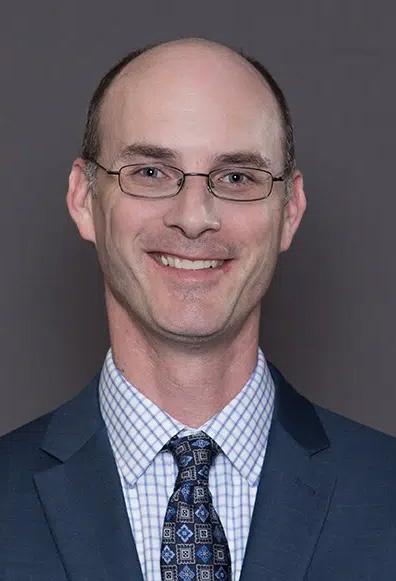
is the executive director of Chicago Rockford International Airport. Under his leadership, passenger and air cargo operations have expanded and grown exponentially. He helps connect regional passengers and the world’s supply chains more efficiently, while supporting airport growth and jobs in the Rockford Region.

By Samantha Hochmann, Haunted Rockford and Tinker Swiss Cottage Museum
When the sun sets over Rockford, the past doesn’t always rest quietly. Our city, known for its industrial might, cultural diversity, and deep immigrant roots, also carries whispers of a more mysterious history. Behind the brick facades of downtown landmarks and within the quiet corners of historic homes, ghost stories and unexplained happenings are woven into Rockford’s memory. The paranormal is very much a part of our local history, and whether you believe in ghosts or not, the stories that linger tell us something important about who we are as a community.
Take Tinker Swiss Cottage Museum, for example. Built in 1865 by Robert Hall Tinker, the house is one of Rockford’s most beloved historic sites—and also one of its most famously haunted. Visitors and staff alike have reported hearing footsteps on the stairs, children’s laughter echoing through empty halls, and even glimpses of figures believed to be members of the Tinker family. While most visitors come for the Victorian architecture and preserved history, many leave with stories of encounters they can’t explain.
The Coronado Theatre is another landmark where history and mystery meet. Opened in 1927 as a “wonder theatre,” the Coronado has dazzled generations with its Spanish Moorish design, twinkling starry ceiling, and world-class performances. But beneath its glamour are tales of phantom presences—actors and patrons who may have loved the theatre too much to leave. The Coronado’s reputation as both a cultural jewel and a haunted hotspot reminds us that our historic spaces are more than bricks and mortar—they’re layered with memory.
Even Rockford’s cemeteries hold echoes of the past. Greenwood Cemetery, one of the city’s oldest, is the resting place of pioneers, veterans, and community leaders. Walking its winding paths, many visitors have described strange lights, unexplained sounds, or the feeling of being watched. But beyond the ghost stories, Greenwood offers something deeper: a chance to connect with the men and women who built Rockford, reminding us that the paranormal is often rooted in real people and real history.
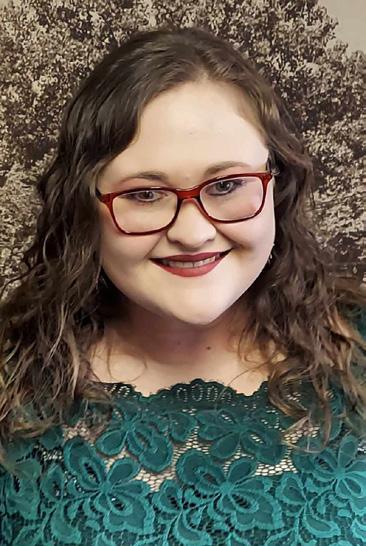
So why do these stories matter? At their core, ghost stories are about memory. They remind us that every building, every artifact, every street corner has a story to tell—sometimes tragic, sometimes joyful, but always human. Paranormal tales ensure that names, places, and moments aren’t lost to time. They spark curiosity and draw people in, especially those who might not usually walk through a museum door or read a history book. They blur the line between folklore and fact, creating a richer, more personal connection to Rockford’s past.
The paranormal has also become a community tradition in Rockford. Ghost tours, paranormal investigations, and storytelling events bring people together and support our historic sites. For many people, a ghost hunt at Tinker Swiss Cottage or a downtown Haunted Rockford history tour is their first step into local history, and it often leaves them with a newfound respect for the stories behind the spirits. In this way, the paranormal becomes a bridge between entertainment and education.
Rockford’s haunted reputation also places it within a larger Midwest paranormal landscape. Just as Galena, Chicago, and other Illinois towns boast famous haunts, Rockford has earned its place on the map of supernatural storytelling. Paranormal investigators, authors, and enthusiasts frequently spotlight our city, showcasing Rockford as a destination for both history lovers and ghost seekers alike.
In the end, the haunted side of Rockford isn’t just about things that go bump in the night. It’s about connection, education, and where we’ve come from. It’s about remembering the lives that shaped our city and recognizing that the past has a way of staying with us— sometimes in ways we can’t quite explain.
So the next time you hear a story about Rockford’s ghosts, don’t just brush it off. Listen closely. Because whether or not you believe in spirits, those stories are a reminder that Rockford’s history is still alive—and waiting for us to notice.
The views expressed are those of the author(s) and do not necessarily represent those of the Greater Rockford Chamber of Commerce.
By John Groh, GoRockford FEATURED
Tourism isn’t just about visitors coming and going. It is about opportunity, pride, and momentum for our community. That’s why the latest report on visitor spending is such good news for Rockford and Winnebago County.
While many parts of Illinois saw declines in 2024, our region moved in the opposite direction. According to data prepared for the Illinois Department of Commerce and Economic Opportunity (DCEO) by Oxford Economics, visitors spent $523.4 million here in 2024. That’s more than half a billion dollars flowing into our local economy—a new record and 1.5% higher than the record we set in 2023.
Put simply: When visitors choose Rockford, they’re fueling growth. They’re booking hotel rooms, filling restaurant tables, cheering at our sports complexes, and creating ripple effects that reach every corner of our community.
By comparison, many of Illinois’ most populated counties, including Champaign, Peoria, Madison, McLean, Rock Island, and Sangamon, saw spending slide by nearly 0.6% on average last year. Without Cook County in the mix, the drop deepens to just over 1%. Even closer to home, neighboring northwest Illinois counties, including Jo Daviess County and Galena, saw an average decline of 0.68%.
Rockford stood apart by bucking those trends. And the results are tangible. Tourism supported nearly 5,000 local jobs, helping families pay bills and employees build careers. It generated $167.8 million in paychecks that went directly into households across Winnebago County. Local governments benefited as well, with $14.7 million in tax revenue to fund essentials like parks, libraries, and public safety. On top of that, tourism produced $34 million in state tax revenue that strengthened communities throughout Illinois.
The Rockford Region is on the rise as a destination, and one destination asset that’s helping fuel the increase is the new Hard Rock Casino Rockford. Since its opening in August 2024, Hard Rock has quickly become the state’s third busiest casino.
Our growth story has also been boosted by national attention. On April 25, 2024, The Wall Street Journal splashed Rockford across its front page with the headline: “Rockford Is Now
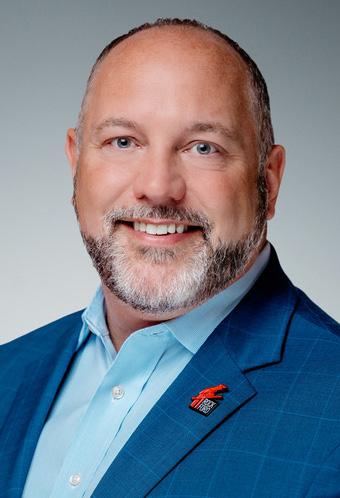
America’s Top Housing Market After an Improbable Turnaround.” That article spotlighted what residents have long known: Rockford offers affordability, opportunity, and quality of life. It also gave momentum to our Made for Rockford initiative, which showcases the region as a great place to live and work.
Soon after, GoRockford welcomed Whitney Martin as program director. A former television journalist and anchor, Whitney has been spreading the word ever since: “Don’t Buy the House. Buy the City!” Her storytelling has reached thousands of potential new residents and employers considering Rockford.
In September 2024, we reintroduced ourselves as GoRockford, aligning our name with the energy and simplicity of our brand. Along with the rebrand came a refreshed website, advertising creative, and a new visitor experience guide, each brimming with itineraries, attractions, dining, and shopping options that help people experience the best of our region. We successfully hosted Illinois’ first IRONMAN race this year and will welcome back the event in 2026 and 2027. Athletes and their families typically extend their stay, often called “race-cations,” which brings extra visitor spending to our restaurants, shops, and hotels.
And the horizon is just as bright. In 2026, Rockford will welcome the World Baseball Softball Confederation’s Women’s Baseball World Cup and the American Hockey League AllStar Classic, and we’ll celebrate the redevelopment of Davis Park. That $15.5 million transformation, supported by state and local funds, will add walking paths, a skate park, public art, a playground, and a concert stage along the Rock River. Together, these amenities will give our downtown a new gathering place for residents and visitors alike.
Tourism here isn’t just about numbers on a page. It is about sustaining livelihoods, inspiring pride, and building a community that more people want to visit, invest in, and call home.
The views expressed are those of the author(s) and do not necessarily represent those of the Greater Rockford Chamber of Commerce.

A look at RPS 205’s mentorship ecosystem
By Jessica Hayes, Sally Medearis, and Antoine Reed, RPS 205
At Rockford Public Schools, we see mentorship as more than an add-on to what we do. To us, it’s a vital extension of our mission. Mentorship is how we connect learning to belonging, guidance to opportunity, and students to futures they might not have imagined for themselves. These efforts are a core part of how we continuously improve as a district and deliver on our promise to every child.
At Conklin Academy, mentorship takes on the bold challenge of making sure a child’s future isn’t determined by their zip code. Through a program that brings local business professionals into the school twice a month, students are paired with caring adults who model communication, curiosity, and resilience. This program is already making a difference. Attendance at Conklin has become a point of pride, with mentorship emerging as a key strategy for closing the gap. The work aligns with the International Baccalaureate (IB) Learner Profile, helping students grow into communicators, inquirers, and openminded citizens. For mentors, this isn’t just a chance to give back; it’s a chance to invest in Rockford’s future workforce and community.
As students grow, mentorship evolves into real-world experience. Through our work-based learning program, high school students connect what they’re learning in classrooms with potential future careers. Whether it’s through job shadows, internships, or work-study programs, students are given a rare opportunity to see what their futures could look like.
And it’s working. Students describe these opportunities as “golden,” often
sparking new passions and reshaping career paths. One student walked into a job shadow thinking education was their “third choice” and walked out ready to pursue it as a first. Another student shared, “I went into my internship expecting to observe, but I ended up loving special education and being fully engaged with students. It changed everything for me.”
These programs connect the workplace, classroom, and guided reflection—ensuring students don’t just dream about careers but step into them prepared and ready to contribute.
Mentorship in RPS 205 is also about identity, representation, and belonging. Brothers and Sisters for Change, a districtwide initiative, unites diverse educators as mentors, role models, and advocates. Together, they support one another and walk alongside students, showing what it looks like to succeed while staying true to who you are.
Aligned with the district’s B.A.G.S. (Behavior, Attendance, Grades, and Social/Emotional learning) framework, Brothers and Sisters for Change shifts the focus from punishment to guidance and from barriers to opportunities. It creates safe spaces for expression, raises expectations, and builds confidence in students who too often go unseen. When young people see themselves reflected in their mentors, the message is powerful.
Together, these efforts form a mentorship ecosystem across the district. At Conklin, young children meet mentors who expand their sense of what’s possible. In high school, work-based learning connects students to careers and futures. Through Brothers and Sisters for Change, young people find role models who
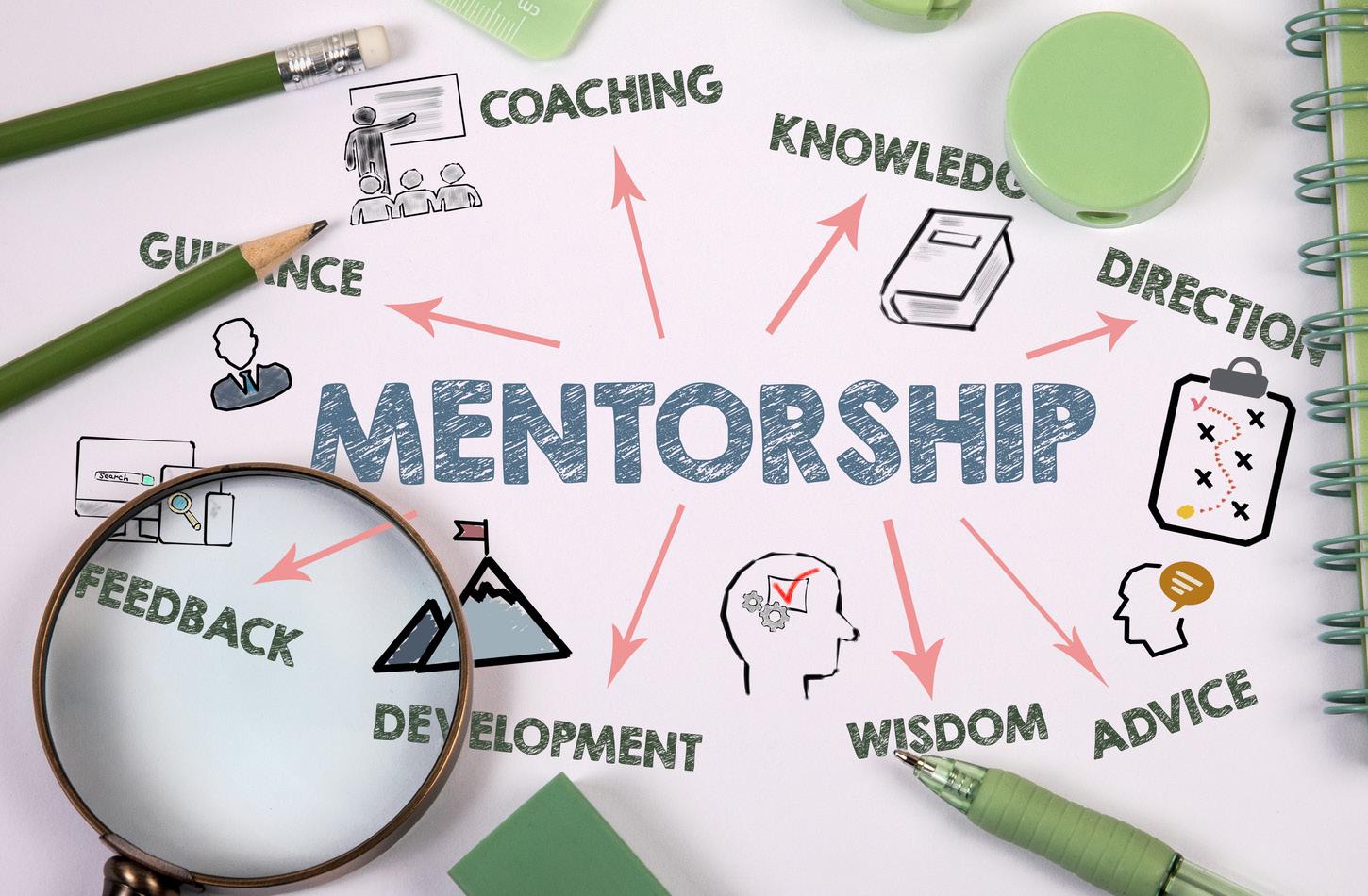
understand their journey and help them navigate it.
The common thread is clear: Relationships drive outcomes. Mentorship improves attendance, strengthens engagement, and builds pathways to achievement. It teaches empathy, resilience, and responsibility, skills that last a lifetime.
At RPS 205, we are committed to finding every possible way to mentor, because we know it changes lives.
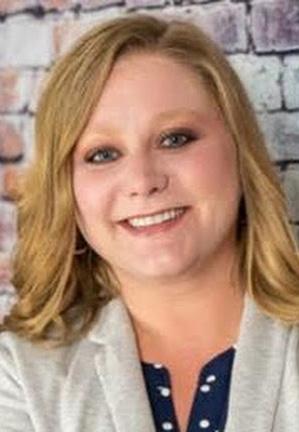

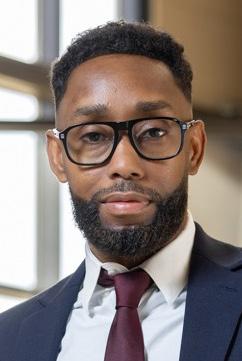
These programs reflect our strategy of continuous improvement, ensuring that we don’t just educate students but walk alongside them as they discover who they are, where they’re going, and why they matter.
The views expressed are those of the author(s) and do not necessarily represent those of the Greater Rockford Chamber of Commerce.
Jessica Hayes has been a work-based learning coordinator with Rockford Public School District 205 since 2020. She manages community partnerships that support work-based learning experiences and events at all five local high schools. Sally Medearis is the assistant principal at Conklin Academy. She’s passionate about building strong relationships, mentoring young people, and creating a sense of belonging at school and in the community.
Antoine Reed, Ed.D., is the chief of culture and student engagement for Rockford Public School District 205. He leads the district’s goal to interrupt the predictability of a student’s success based on their zip code.

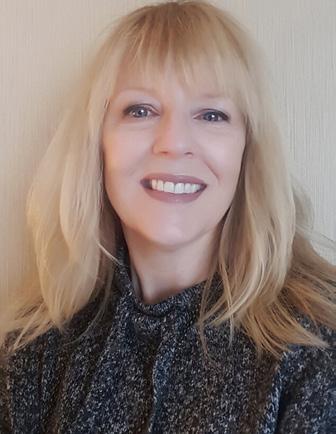


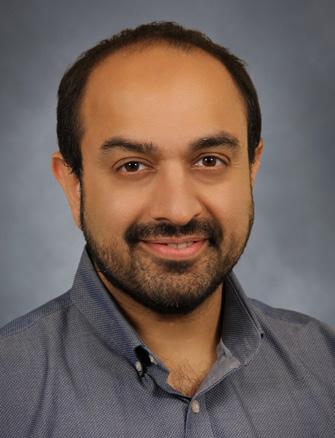
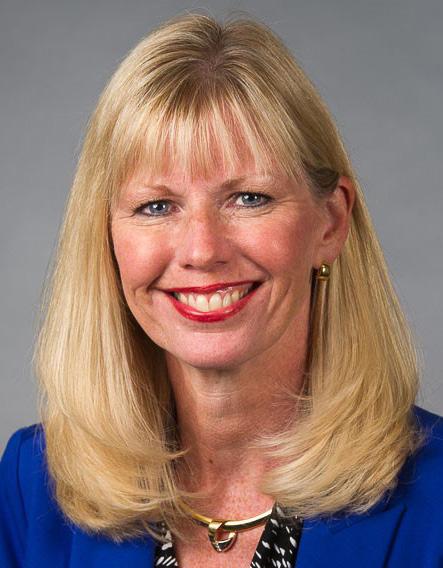
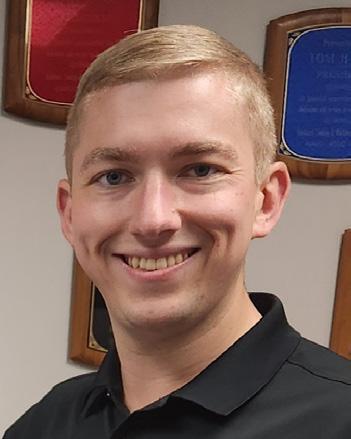


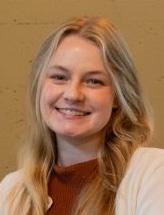
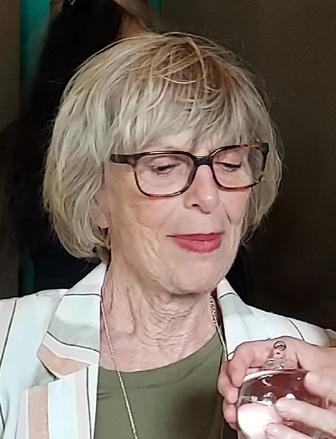
Rockford Art Museum added Rhonda Gates (1) and Jillian Myers (2) to its board of trustees.
The board of directors of the Golden Apple Foundation of Rockford welcomed new members: RuthAnn Bates (3) of Ivy House Creative Café, Heather Kelley (4) of Rock Valley College, Casey Lester (5) of Field Fastener, Millard Washington (6) of Crusader Health, Paul VonDriska (7) of Bergstrom, and Haiwei Yuan (8) of Hard Rock Casino Rockford Gabriela NunezReagan (9) was appointed Teacher Academy representative to the board.
Naser Khan (10), MD, FASGE, a clinical assistant professor in the University of Illinois College of Medicine Rockford Department of Medicine and Medical Specialties, is the new assistant dean for graduate medical education and the designated institutional official

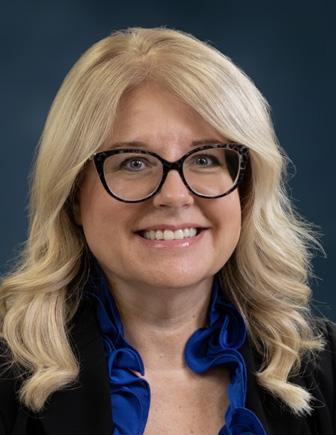

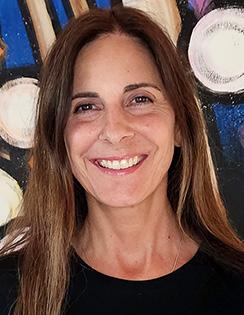

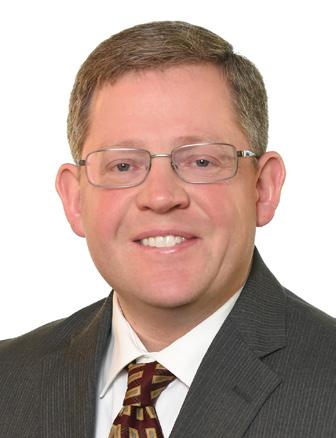




(DIO) responsible for compliance with the Accreditation Council for Graduate Medical Education (ACGME). Khan is Mercyhealth’s medical director and chief of gastroenterology and serves as the associate DIO for the Mercyhealth Graduate Medical Education Consortium.
Womanspace welcomed Alondra Lavariega Castellanos (11) as program coordinator, and Denise Colin (12) as marketing coordinator.
Mercyhealth welcomed Nicholas Baur (13), DO, gastroenterologist, to the Mercyhealth Physician Clinic–Riverside, 8201 E. Riverside Blvd., Rockford, and the Mercyhealth Hospital and Physician Clinic–Crystal Lake, 875 S. Route 31, Crystal Lake.
Mercyhealth also welcomed Mayur Narkhede (14), MD, board certified hematology and medical oncology physician, to the new Mercyhealth Cancer Institute, 8201 E. Riverside Blvd., Rockford.
Greater Rockford Chamber of Commerce members appear bolded. Thank you for your support of your fellow Chamber members.
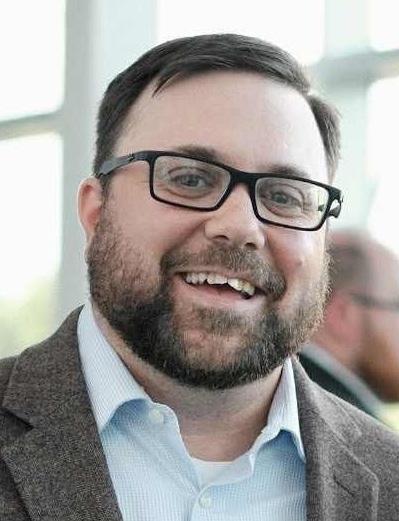
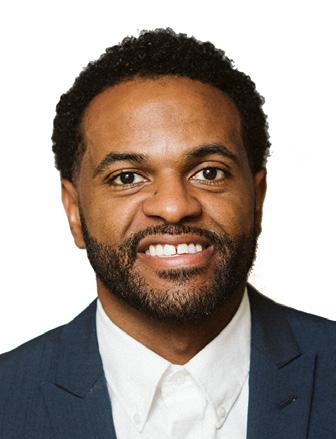
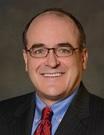
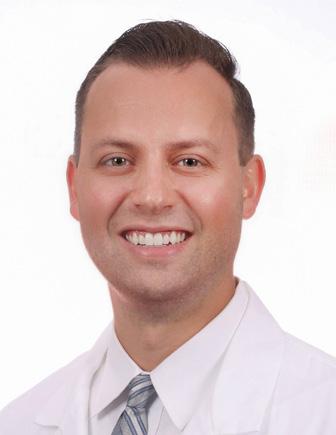

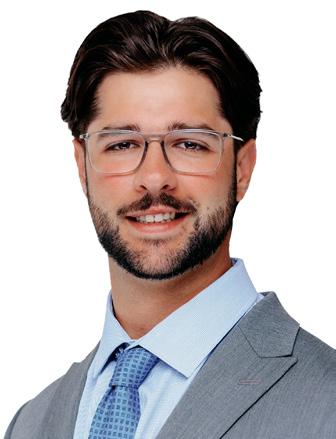
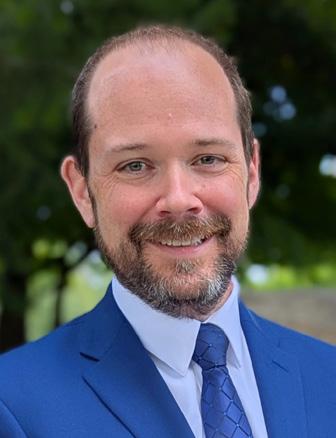
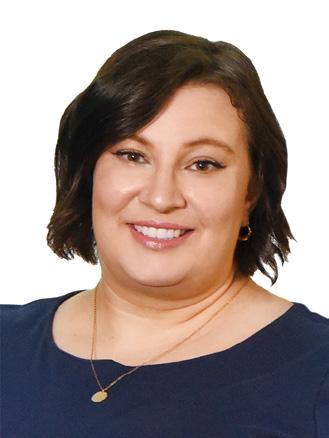


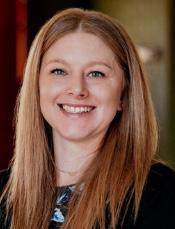
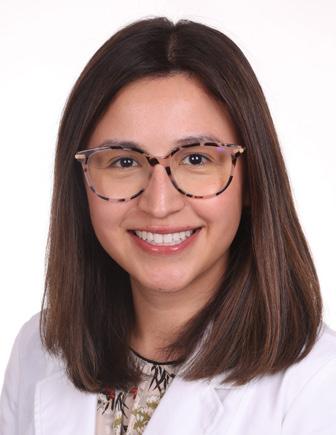
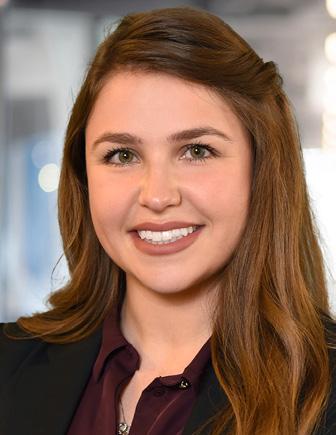
Fehr Graham hired Ben Bugno (15) as a hydrogeologist and Garrett Flores (16) as an engineer at its Rockford facility.
SwedishAmerican Health Foundation welcomed Tricia Cratty (17) as its new senior philanthropy strategist.
Anthony Busse (18) was appointed vice president at Rockford Toolcraft
Stillman Bank welcomed Jacob Davenport (19), CFA, CFP®, as trust investment officer.
Fehr Graham promoted Vaughn Lewis (20) to senior project engineer.
Stephen Smith (21) returned to Rosecrance as the president of Rosecrance Illinois, where he will oversee all community-based services offered throughout the state.
KMK Media Group promoted Devin Mainville (22) to communications manager.
The Center for Sight & Hearing welcomed Anneliese M. Hartman, AuD, as the primary audiologist hearing specialist and director of their hearing clinic.

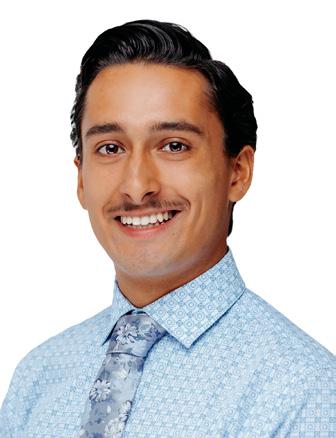

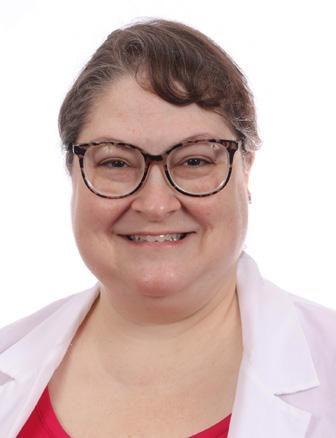
Spine and Body Renewal welcomed Kierra Ridder (23), DC, as a National Upper Cervical Chiropractic Association chiropractor.
Fehr Graham hired Dalton Tyler (24) as IT support specialist.
Mercyhealth welcomed Benjamin Mathew (25), MD, board-certified ophthalmologist and fellowship-trained pediatric ophthalmologist, to the Mercyhealth Eye Centers at 2350 N. Rockton Ave., Rockford, and 2000 Lake Ave., Woodstock.
Andrew Li (26), data analytics specialist, joined Rockford Mutual Insurance Company
Spark Properties welcomed Jeremy Foster to its maintenance staff.
The Community Foundation of Northern Illinois (CFNIL) named James Patterson (27), formerly senior program director, as president. CFNIL also promoted Heather Cunningham (28) to scholarship and In Youth We Trust officer, Lisa DeLang (29) to grants officer, and Shannon Gustafson (30) to vice president of finance and administration.
Mercyhealth welcomed Crystal Rayon (31), MD, board-certified family medicine doctor, to the staff at Mercyhealth Cherry Valley, 6998 Redansa Dr., Rockford; and Rebecca Uhlmann (32), MD, board-certified surgeon and fellowship trained breast
physician to
staff at Mercyhealth Women’s Center, 2780 McFarland Rd., Rockford, and Mercyhealth Terrace, 510 N. Terrace St., Janesville.
Raegan Hilbrant (33) joined Region 1 Planning Council as a community impact specialist.
OrthoIllinois welcomed Mohit Gupta, MD, a specialist in rheumatology, focusing on autoimmune diseases and complex inflammatory conditions, to its Rockford – Riverside Clinic.
Spherion Staffing & Recruiting welcomed three new team members to its Rockford office: Jim Gorzek, business
development manager; Tenille Weber, professional recruiter; and Michaela Seay, recruiter.
MaryAnn Norwood (34) was honored for 18 years of service on the Golden Apple Foundation of Rockford Board of Directors.
Will Benson (35), PE, engineer with Engineering Enterprises, Inc., successfully passed the Principles and Practice of Engineering exam administered by the National Council of
Examiners for Engineering and Surveying to obtain his professional engineer license.
OrthoIllinois’ leading total joint specialist, Dr. John Bottros, was named to Newsweek’s 2025 List of America’s Leading Doctors.
Pierce Laminated Products Inc. recognized owners Eric Lindroth and Tim Sather for 58 years and 50 years of service, respectively, in the manufacturing community.
Carpenter’s Place recognized its Partners in Success Award recipients at its 25th anniversary celebration: Helping
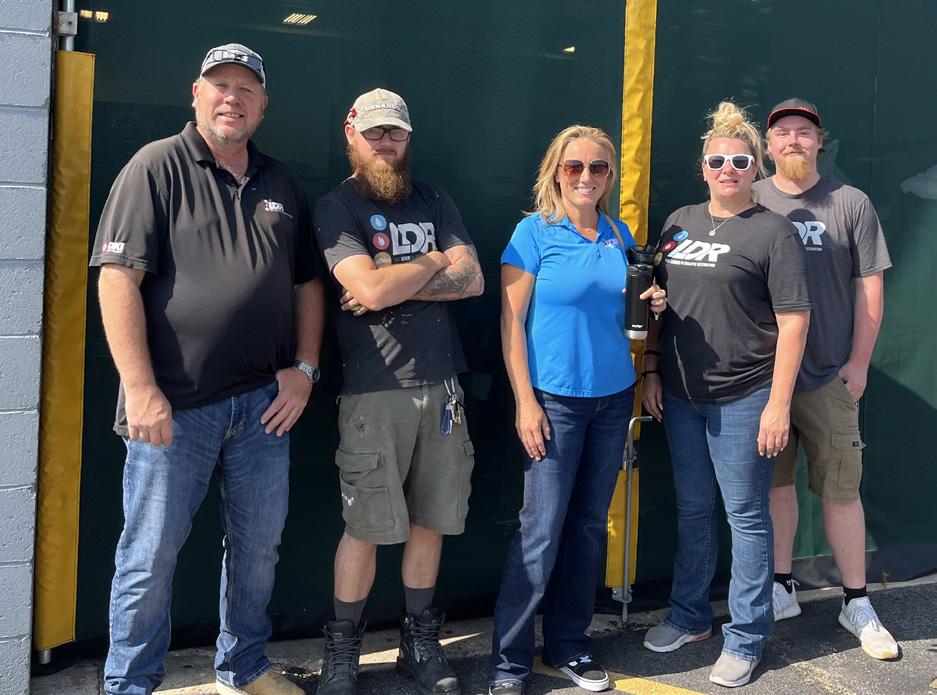
Employees from LDR Cleaning & Restoration (LDR) (above) spent two days helping the Rock River Valley Pantry stock food donations.
Members and visitors to First Northern Credit Union’s (above) Rockford branch, located at 104 N Show Place Drive, raised $3,100 this summer to support Empower Boone, a nonprofit organization that provides vital resources for families in need.
OSF Sleep (above) in Rockford received accreditation from the American Academy of Sleep Medicine, making OSF Sleep one of 25 programs in the nation to achieve the 25-year accreditation milestone.
Smithfield Foods donated 13,000 pounds of salami to the Northern Illinois Food Bank
OSF HealthCare was recognized on the Forbes list of Best Employers by State for 2025, ranking 67 in the 100 top companies in Illinois. This marks the seventh year in a row OSF has been included in this prestigious recognition.
Mercyhealth Javon Bea Hospital— Riverside received the American Heart Association’s Get With The Guidelines— Stroke Gold Plus quality achievement award.
The Rockford Park District held a grand opening for the Clarence Hicks Sports Complex, 2004 Ogilby Road, Rockford.
Hard Rock Casino Rockford celebrated its first anniversary on Sept. 3 with a special employeeonly celebration featuring a guitarshaped cake as a tribute to Rockford native and Cheap Trick guitarist Rick Nielsen. The casino also added a piece of hometown history to its gaming floor with the unveiling of three custom Rockford Peaches-themed slot machines.
Trekk, Inc. announced new ownership effective January 1, 2026. Laura Bennett, one of the founders and current Trekk CEO, will retire after 30 years. Shayne
Hands Award, Randy Thomann; Teams of Excellence Award, RPS 205 Plus Program; Angel Award, OSF Healthcare Foundation; Family Services Partner Award, Angela and Christen Walker; Guardian Award, SecondFirst Church
Joseph Tefft (36), marketing representative, celebrated five years with Rockford Mutual Insurance Company
Savant Financial advisor Ashley R.G. Olivas (37), CFP®, CPA, MAcc, received a Rising Star of the Year award at the 11th annual ”Wealthies” awards ceremony.
Greater Rockford Chamber of Commerce members appear bolded. Thank you for your support of your fellow Chamber members.
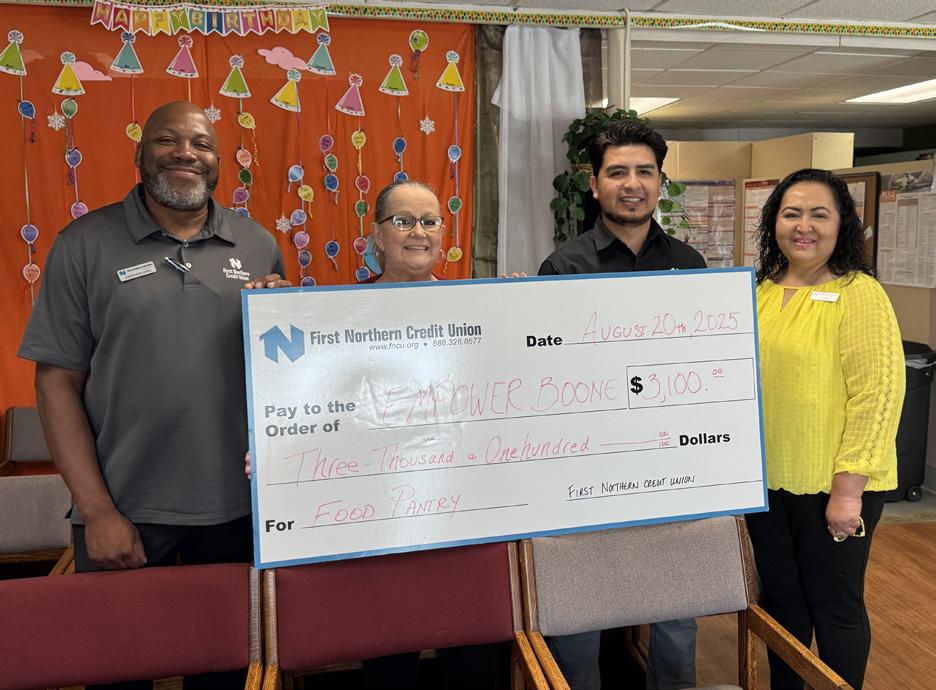
Terry and Emilee Christianson, both daughters of original Trekk founders, will assume ownership and management of the agency.
GoRockford celebrated the expansion of its CRE8IV: transformational art sculpture program with the installation of 18 new sculptures throughout the city and a new home for the ROCKFORD letters, made possible thanks to an arts grant from the City of Rockford. Learn more at www.gorockford.com/cre8iv/artartists/sculptures
Per Mar Security launched its redesigned website at permarsecurity.com.
The Rockford Area Arts Council awarded Action Grants to five local creatives: Midwest Silhouette, Sad Fest Lil Lizzie INC, Artists’ Ensemble Theater, Rockford Players Guild, and Deborah Ann Lucas.
Savant Wealth Management, headquartered in Rockford, acquired PrairieView Partners, a CPA-led registered investment adviser in St. Paul, Minnesota, with more than $1.2 billion in assets under management. This is Savant’s fourth acquisition in 2025 and expands the firm’s national footprint to 20 states, including its first presence in Minnesota.
Natural Land Institute acquired 20.5 acres of old growth forest in Pecatonica, Illinois.
Anderson Japanese Gardens was selected by HGTV as the most beautiful garden to visit in Illinois in its recent feature, “The Most Beautiful Garden You Can Visit in Every State.”
Chartwell Agency announced its continued partnership with Chicago Rockford International Airport (RFD), a leading regional passenger and global cargo airport.
The YMCA of Rock River Valley announced the grand opening of its newly renovated Kids’ Care Center at the SwedishAmerican Riverfront YMCA, 200 Y Boulevard in Rockford. The unveiling
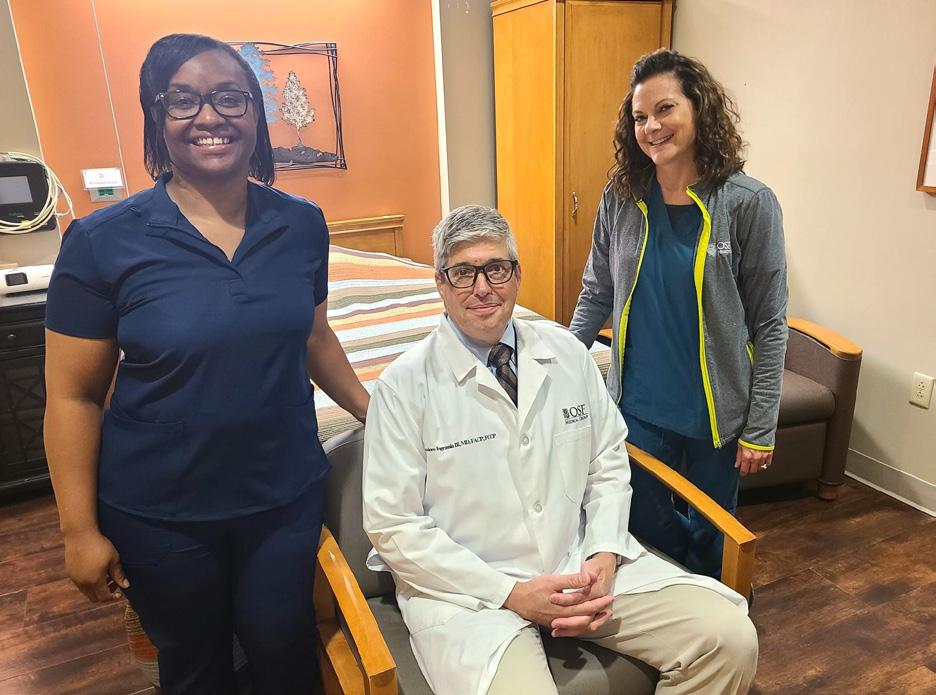
marks the completion of a $750,000 renovation project, made possible through a partnership with Goodwill Industries of Northern Illinois and the introduction of The Excel Center at the Y – a tuition-free high school for adults. The International Women’s Baseball Center received a $2,000,000 grant from the Steven & Alexandra Cohen Foundation, led by philanthropist and Mets Owner Alex Cohen, and a $350,000 grant from the Amazin’ Mets Foundation, the philanthropic arm of the New York Mets.
International gaming publication, Casino Player Magazine, named Hard Rock Casino Rockford “Chicagoland’s Best” in 13 categories in its August 2025 “Best of Gaming” awards. First-place wins: Best Promotions, Best Table Games, Best Dealers, and Best High Limit Room. Second-place wins: Best Players Club, Best Poker Room, and Best Carnival Games. Third-place wins: Best Casino, Best Video Slots, Best Craps, Best Overall Sports Book, Best Betting Options, and Friendliest Sportsbook.
Rock Valley Credit Union opened its fourth branch at 2676 DeKalb Avenue in Sycamore, Illinois.
The Natural Land Institute’s Legacy Tree of the Month for September was an extremely large Osage Orange (Maclura pomifera) found along the edge of a farm field in Ogle County.
OSF HealthCare’s drive-up flu clinic is open at OSF Medical Group – Primary Care, 698 Featherstone Road in Rockford. Patients can use OSF MyChart to schedule their appointment or call the office at 815-399-4404.
Mercyhealth Specialty Pharmacy received accreditation from the Utilization Review Accreditation Commission, an independent, nonprofit organization that promotes health care quality through its accreditation, education, and measurement programs.
Region 1 Planning Council received a $70,000 Partnership Planning grant from the Economic Development
Administration to plan for infrastructure, workforce development, sector expansion, and business development investments to create shovel-ready sites for business attraction and job creation in Northern Illinois.
Rockford Public Library, in partnership with United Way of Rock River Valley, expanded its “Modeled Moments” Storytime Training program with a new Spanish-language track: Momentos Modelados.
Rosecrance Behavioral Health celebrated 77,336 individuals served during the 2025 fiscal year.
Mercyhealth’s Javon Bea Hospital–Riverside earned the Healthgrades 2025 America’s 100 Best Hospitals Award™, placing it among the top 2% of hospitals nationwide for clinical excellence and patient outcomes in treating common conditions and procedures.
OSF HealthCare was awarded $2.5 million from the Patient-Centered Outcomes Research Institute to advance how high blood pressure (hypertension) is managed.
The Rock River Valley Blood Center celebrated the reopening of its donor site at 1740 S. State St. in Belvidere.
Trekk celebrated 30 years in business on Oct. 1.
The Rockford IceHogs unveiled an all new website design (www.icehogs.com) and app.
GoRockford and Rockford Park District announced Rockford has been selected as the host city for the 2026 USA Ultimate Division I College Championships, one of the premier events in the sport of ultimate.
The Rock River Valley Tooling & Machining Association launched its newly redesigned official website (rrvtma.com).
CAUSEWAY COUNSELING
www.causewaycounseling.org
CLEARCUT ORTHODONTICS
https://clearcutorthodontics.com
ELDR-US, LLC
https://eldrforyou.com
FORGEWISE
https://forgewise.net
IMAGINE MORE COUNSELING SOLUTIONS
LLC
https://imcsolutionsllc.com
POPLAR GROVE VINTAGE WINGS & WHEELS MUSEUM
www.wwmuseum.org
THE HAPPY CANNABIS CO. LOVES PARK
https://thehappycannaco.com
The GRCC is now promoting community events exclusively through our social media channels. So be sure to follow the Chamber on Facebook and Instagram for timely event info and live links. Members may continue to submit event announcements to editor@rockfordchamber.com
For the latest info on fun and interesting things to do in the Rockford Region, check out the events calendar at GoRockford.com
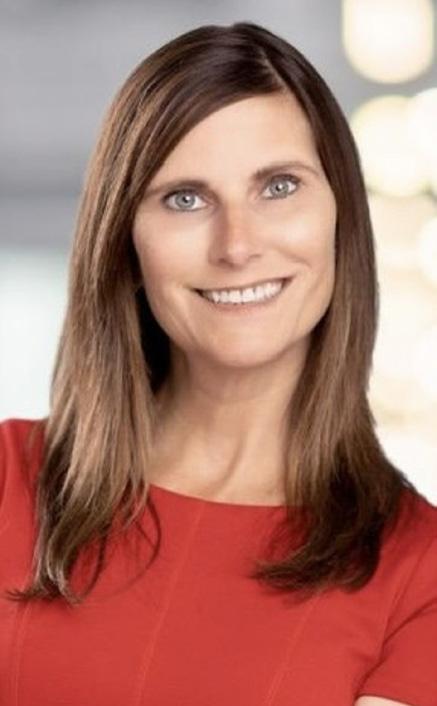
What is your business? What do they provide for the community?
I’m a private client banker at JPMorganChase, with a background in financial advising and planning. It’s my job to make sure my clients are on the right financial track for all their individualized goals. My favorite part is meeting with clients and listening to their stories. Each one is unique, and I love being the person who can help them on their journey.
I’m also a freelance writer and happy to have been part of the chamber’s “40 Under 40” feature. We’ve got some fantastic young people making Rockford their home.
How long have you been a Chamber Ambassador?
I’m in my first year of being an ambassador. I was introduced to the team by Kaleb Price who is a super ambassador.
What is your favorite thing to do in Rockford or favorite thing about Rockford?
For me, Rockford is part of my history. Growing up in Rochelle, we made regular trips here to the orthodontist, to Lawson’s for art supplies (my mom was an artist) and, of course, stops at Colonial Village and Cherryvale malls. I love that Rockford has morphed into its own and is on a journey of amazing, thoughtful growth. When I’m not working, you can find me hiking or snowshoeing at a local park, golfing, at a live music event, attending Mass, dining at one of our many locally-owned restaurants, or at the Rockford Woman’s Club, of which I’m an enthusiastic and active member.
Advice for someone, especially young professionals, considering becoming an Ambassador?
My advice to anyone, young or not so young, is take that leap into something new and join. Being a GRCC Ambassador is a smart way to connect with others in Rockford. It’s an eclectic group, and you’ll learn about other businesses and what makes Rockford special.
Thank you to our members celebrating their anniversaries with the Greater Rockford Chamber of Commerce
20 YEARS
Amberwood Care Centre
15 YEARS
Spider Company Inc.
The Alliance
10 YEARS
Area Erectors, Inc.
5 YEARS
Jersey Mike’s Subs
Thank you to members who renewed with the Greater Rockford Chamber of Commerce in August 2025.
11th Street Express Printing, Inc.
ADVENT
Affordable Insurance & Tax
Alzheimer’s Association, Illinois Chapter
American Family Insurance
Anderson Automotive Group
atmosphere commercial interiors
Beefaroo, Inc.
C & H Design Center
Cicero, France & Alexander, P.C.
City of Loves Park
Collins Aerospace Community Foundation of Northern Illinois
Easterseals
First Northern Credit Union
Fleet Feet Rockford
Forest City Gear Co.
Gleason Cutting Tools Corporation
Gordon Flesch Company, Inc.
Heritage Woods of Rockford
Hirsch Law Group
Historic Auto Attractions
Honest Pest Control Inc.
Honeybee Roofing
Hughes Recruiting & Consulting
Ignite Change Solutions LLC
Illinois Department of Children & Family Services
Illinois Manufacturing Excellence Center (IMEC)
J & M Plating, Inc.
J. Carlson Growers, Inc.
Johnny Pamcakes
Kaney, Inc.
Kiwanis Club of Rockford
Laurent House Museum (designed by
Morgan Building Maintenance Inc.
Northwestern Mutual
Prairie Street Brewing Co.
Premier Technologies
Radisson Hotel & Conference Center
Rasmussen University
Rock River Service Company
Rock River Valley Tooling & Machining Association
Rockford Art Museum
Rockford Barbell
Rockford Carpetland USA, Inc.
Rockford Cosmopolitan Club
Rockford Local Development Corporation
Rockford Lutheran School
Segra
Spherion Staffing & Recruiting
State Farm Insurance
- Brian Faulk, CLU, ChFC
Stateline Youth for Christ
Sub Source
The National Alliance on Mental Illness (NAMI) Northern Illinois
The UPS Store
Think Big Corporation
Welders Supply
Wendy’s Old Fashioned Hamburgers (K & K Foods Inc.) - Downtown
Wendy’s Old Fashioned Hamburgers (K & K Foods Inc.) - Riverside Blvd
Wendy’s Old Fashioned Hamburgers (K & K Foods Inc.) - State Street
WinMan LLC
Winnebago Motor Homes
Wired Café
The Greater Rockford Chamber of Commerce welcomes member submissions for the VOICE. Deadline is the 5th of the month preceding publication date. Send news releases and people announcements to editor@rockfordchamber.com. For information about advertising contact customer service at 815-987-8100.
The VOICE of the Greater Rockford Business Community (USPS 784-120). ISSN number 1086-0630, is published monthly by the Greater Rockford Chamber of Commerce, 308 W. State St., Ste. 350, Rockford, Illinois 61101. Periodicals postage paid at Rockford, Ill.
POSTMASTER: Send address changes to: The VOICE of the Greater Rockford Business Community, 308 W. State St., Ste. 190, Rockford, IL 61101.
Crack the Code, 3 p.m., Greater Rockford Chamber of Commerce, 308 W State St, Suite 190, Rockford.
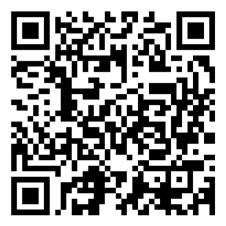
Discover the six types of Working Genius and learn how to build a team that runs smoothly, grows faster, and gets more done. Whether you’re a solopreneur or leading a growing team, you’ll leave this session with clarity and practical steps to bring out the best in yourself and others. Plus, see how this tool can help scale your business and reduce the overwhelm.
Workforce Meets Metals: Unlock Workforce Strategies with IMEC & the METAL Project, 8 a.m., Greater Rockford Chamber of Commerce, 308 W State St, Suite 190, Rockford.

Illinois is a critical hub for metals manufacturing in the U.S., and companies in casting, forging, plate rolling, and related industries are essential to both economic growth and national defense. As workforce challenges continue to rise, now is the time to tap into targeted resources that can help you attract, train, and retain the talent you need to thrive.
Join us for a strategic roundtable discussion facilitated by Mary Hallock of IMEC and Scott Ellsworth of Jobs for the Future. This event will introduce you to The METAL Project (Metallurgical Engineering Trades Apprenticeship & Learning), a national initiative led by IACMI—The Composites Institute and supported by the U.S. Department of Defense. The project is focused on building a national network of education and training providers to develop a modern, highly skilled workforce for the metals industry.
OCTOBER 23
MAC2025—Midwest Aerospace Conference, 7 a.m.-5:30 p.m., Embassy Suites, 416 S. Main St, Rockford. Presented by the Rockford Area Aerospace Network (RAAN), Greater Rockford Chamber of Commerce, and IMEC.
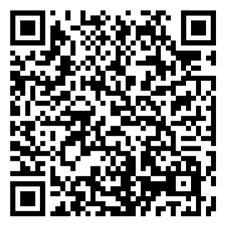
Get ready for a full-day of industry insights, expert-led sessions, and networking. With the theme of “The Future of Aerospace Manufacturing,” this year’s agenda centers on aerospace manufacturing business growth and improving manufacturing efficiency through automation and innovation.
Matchmaking sessions: Meet one-on-one with top industry players. These moderated meetings are a rare opportunity to introduce your capabilities directly to key supply chain stakeholders. Matchmaking sessions are available to manufacturers only.
Exhibit hall: Showcase your products and services, explore innovations from others in the field, and connect and collaborate with peers. Exhibit space is limited and assigned on a first-come, first-served basis.
NOVEMBER 13
Pow(H)er, 8:15 a.m.-4:30 p.m., Embassy Suites, 416 S. Main St, Rockford.
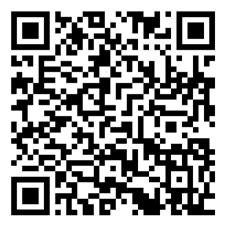
Join us for Pow(H)er, a conference for all who support, believe in, and champion the advancement of women. An expansion of our Women in Business Luncheon, Pow(H)er offers attendees (women and men) the opportunity to dive deeper into topics important to the advancement of women. Seats at the breakfast kickoff and Women in Business Luncheon are included with registration but can be purchased separately for those unable to attend the fullday conference.
EXECUTIVE COMMITTEE
Lesly Couper Workplace
Chair
Conor Brown NorthWest Illinois Alliance of Realtors Vice Chair
Nate Jordan Illinois Small Business Development Center Treasurer
Terry Voskuil Woodward, Inc. Immediate Past Chair
DIRECTORS
Wendy Alsteen Hard Rock Casino
Travis Andersen UW Health Northern Illinois Region
David Anspaugh
Building Contractors Assoc.
Armando Cardenas
Affordable Insurance & Tax Service Inc.
Paula Carynski
OSF Healthcare Saint Anthony Medical Center
Jean Crosby Berkshire Hathaway HomeServices Crosby Starck Real Estate
Dietmar Goellner Advanced Machine & Engineering/Hennig
Thomas Green Barrick, Switzer, Long, Balsley & Van Evera, LLP
Troy Haggestad WilliamsMcCarthy LLP
Sheila Hill Think Big Corporation
Thank You for Your Investment in the Greater Rockford Chamber of Commerce!
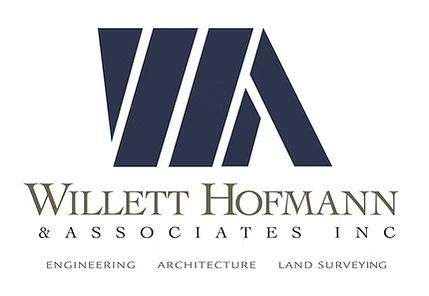
Jeff Hultman Foresight Financial Group
Carly LaMonica LaMonica Beverages, Inc.
Frank Wehrstein Dickerson & Nieman Realtors
EX-OFFICIO DIRECTORS
Mayor Tom McNamara City of Rockford
Gina Caronna The Workforce Connection
Michael Dunn, Jr. Region 1
John Groh GoRockford
Angela Kay Larson Greater Rockford Chamber of Commerce

